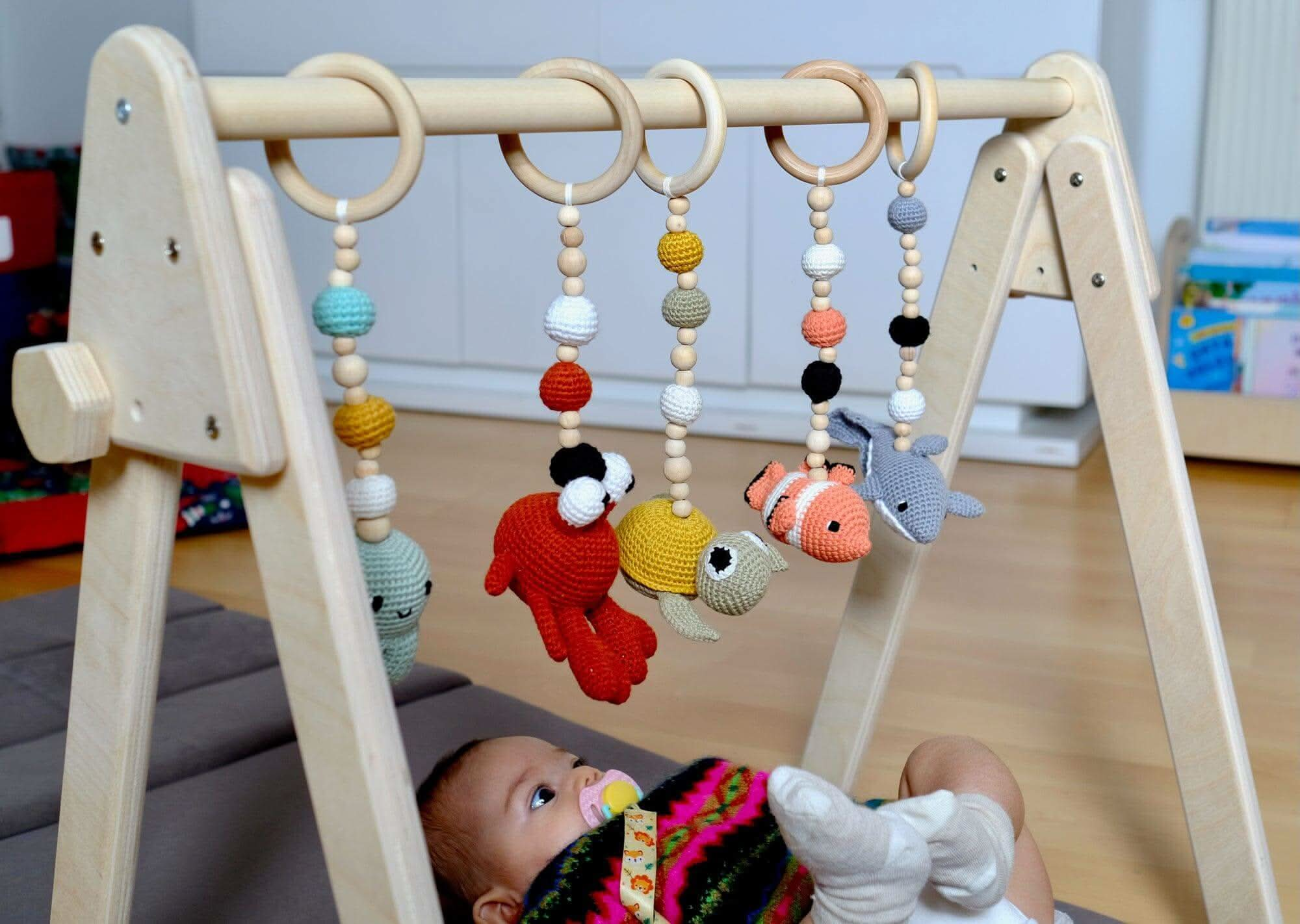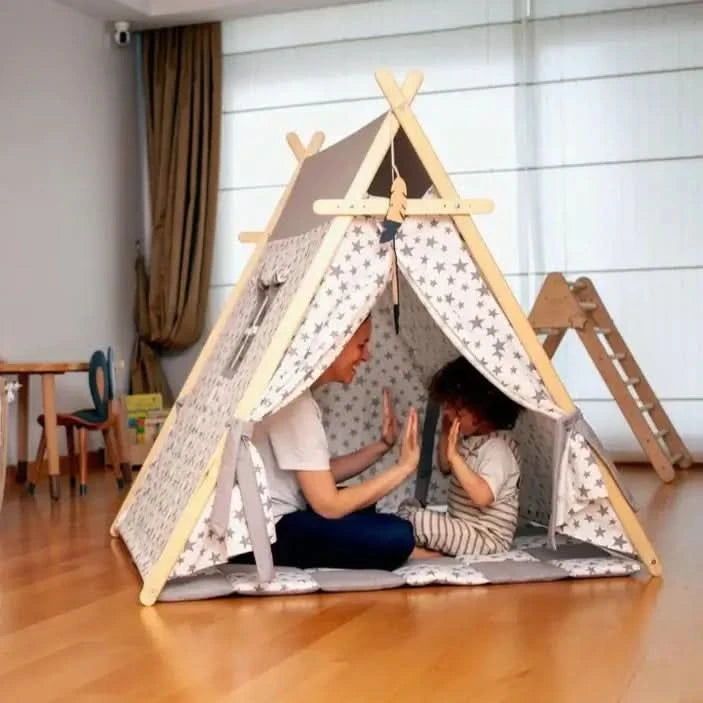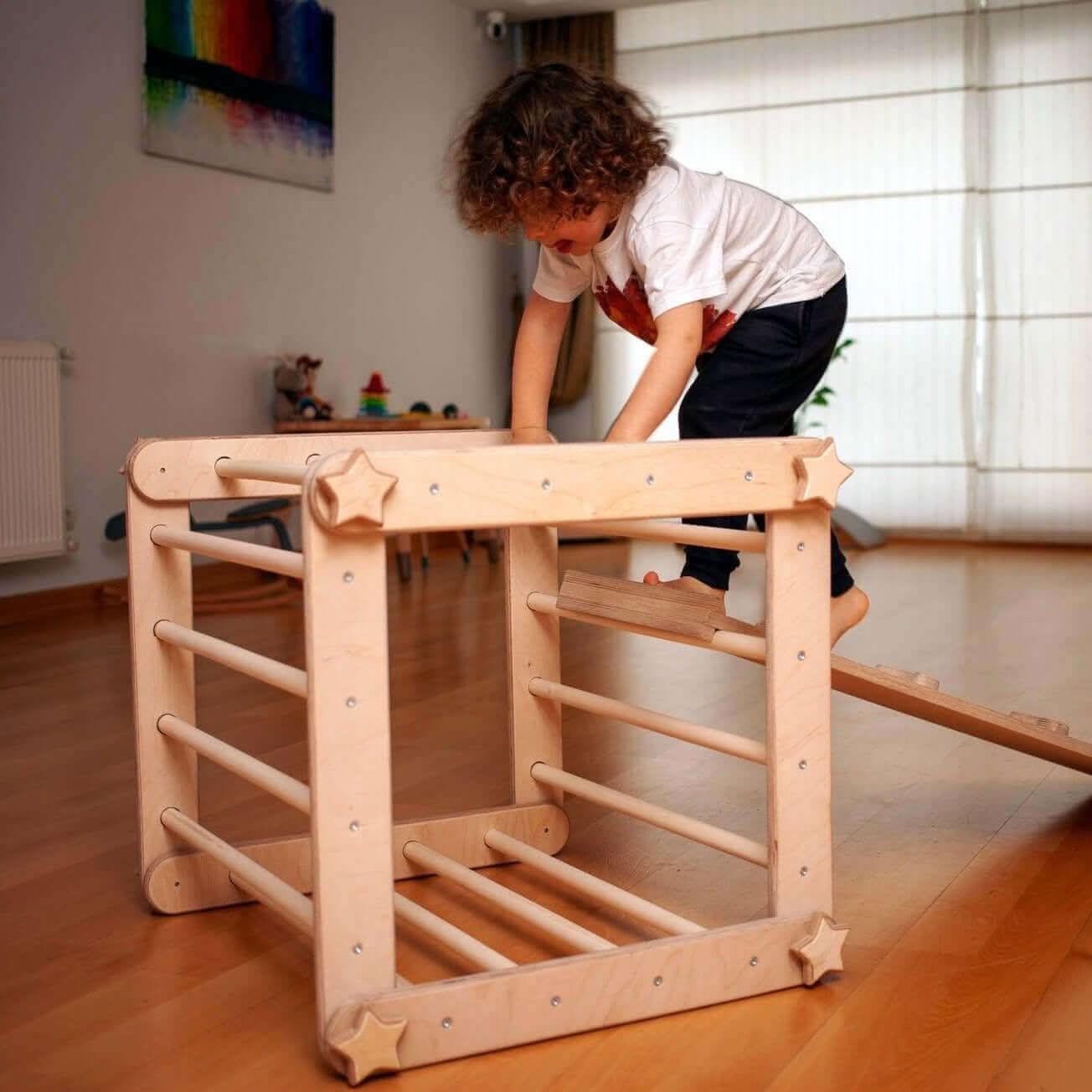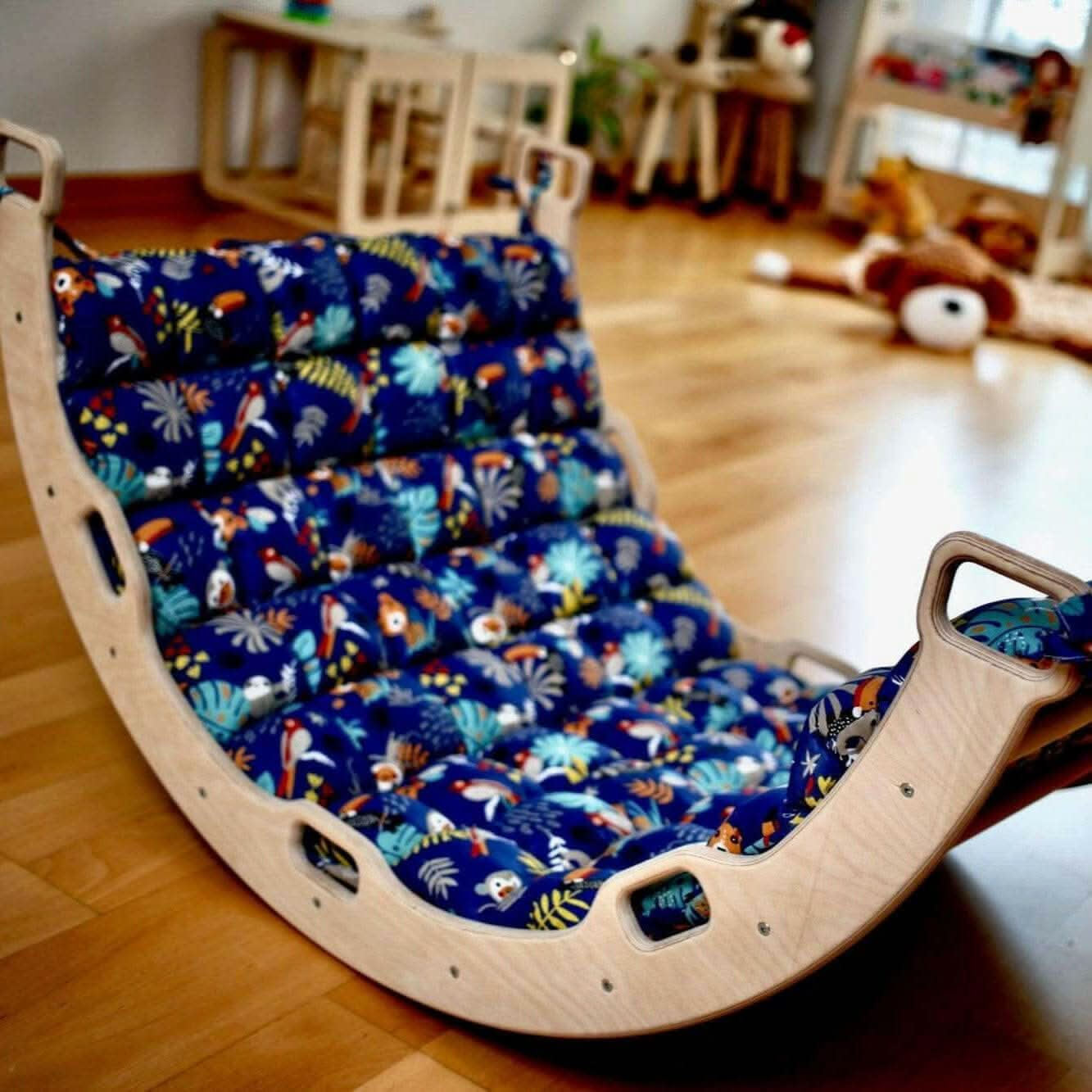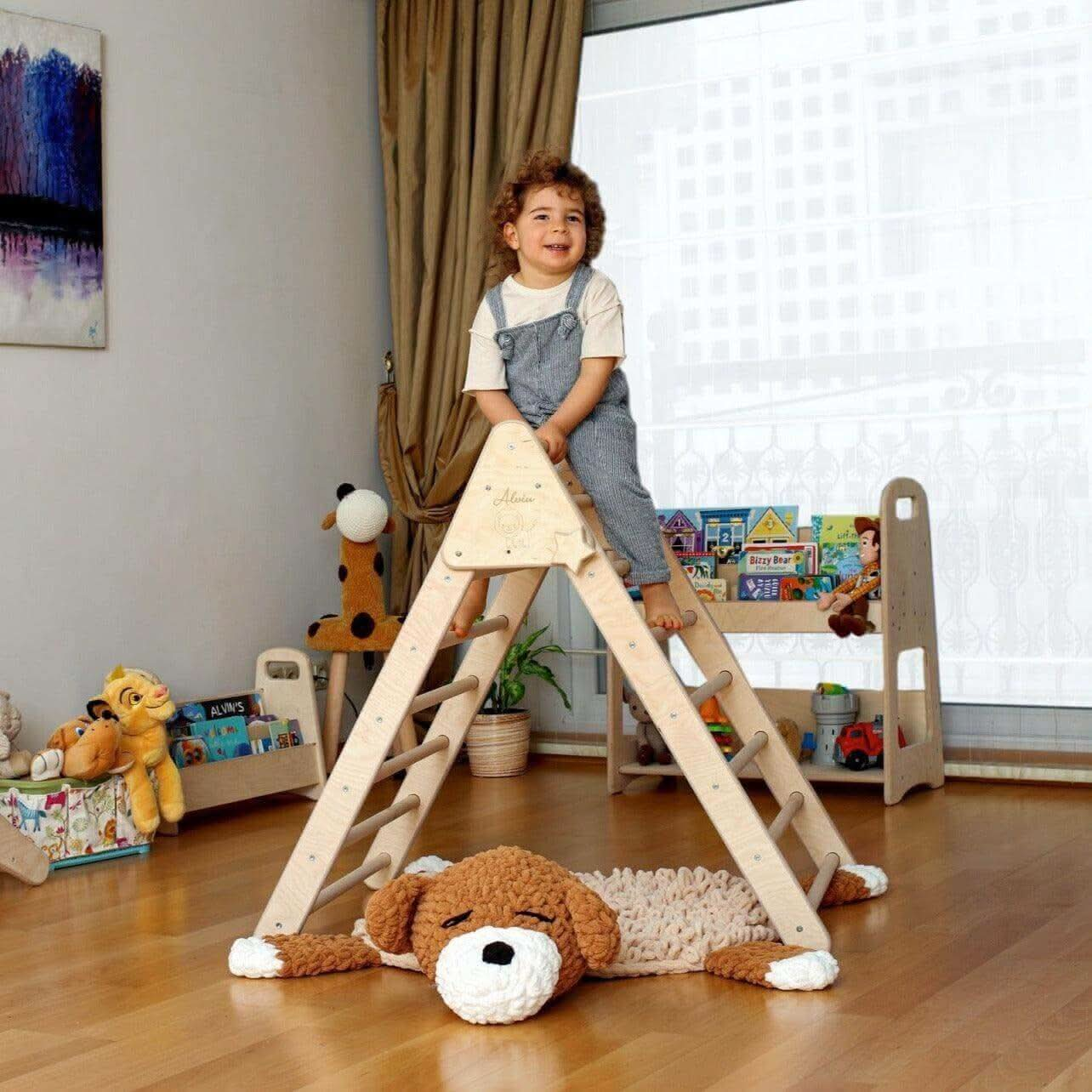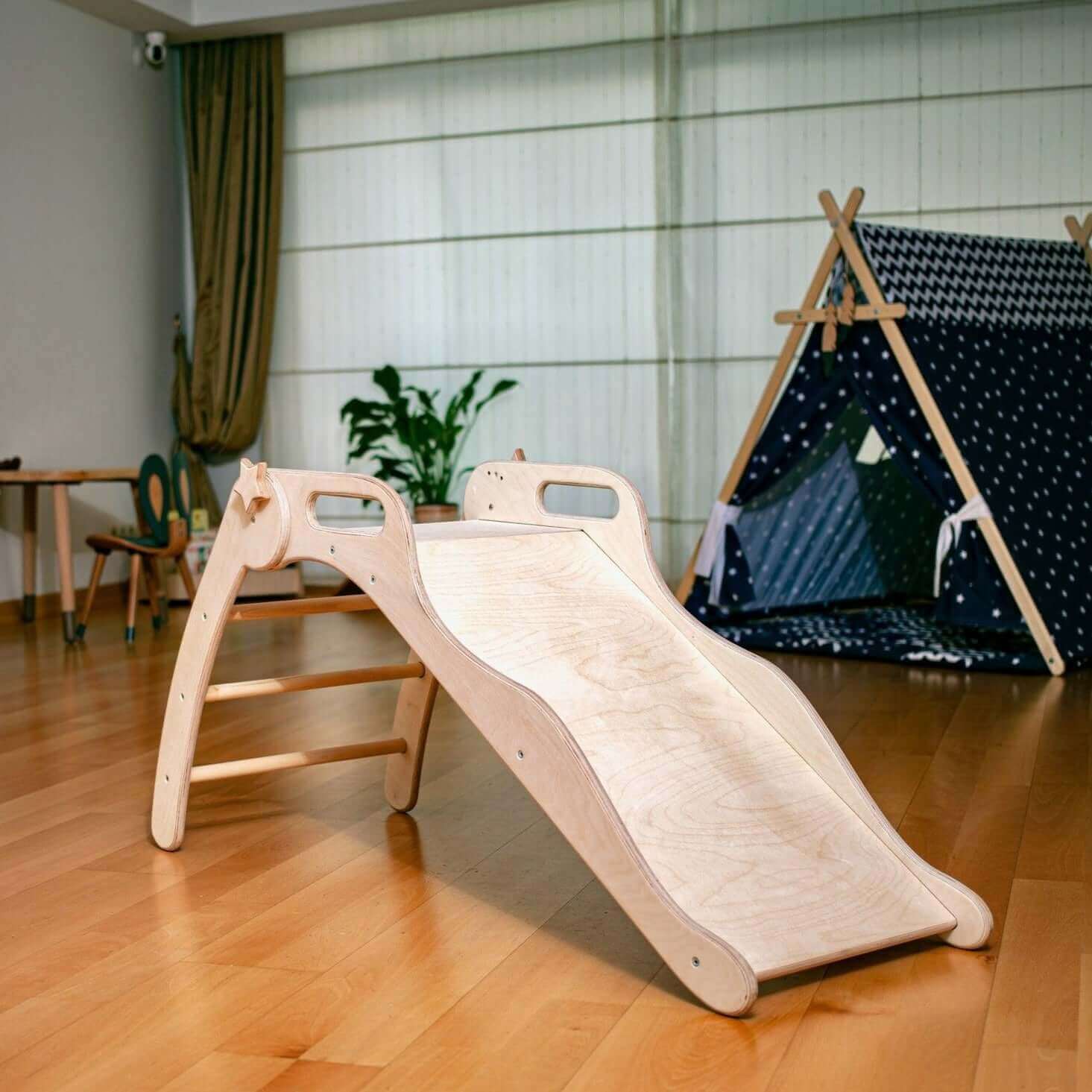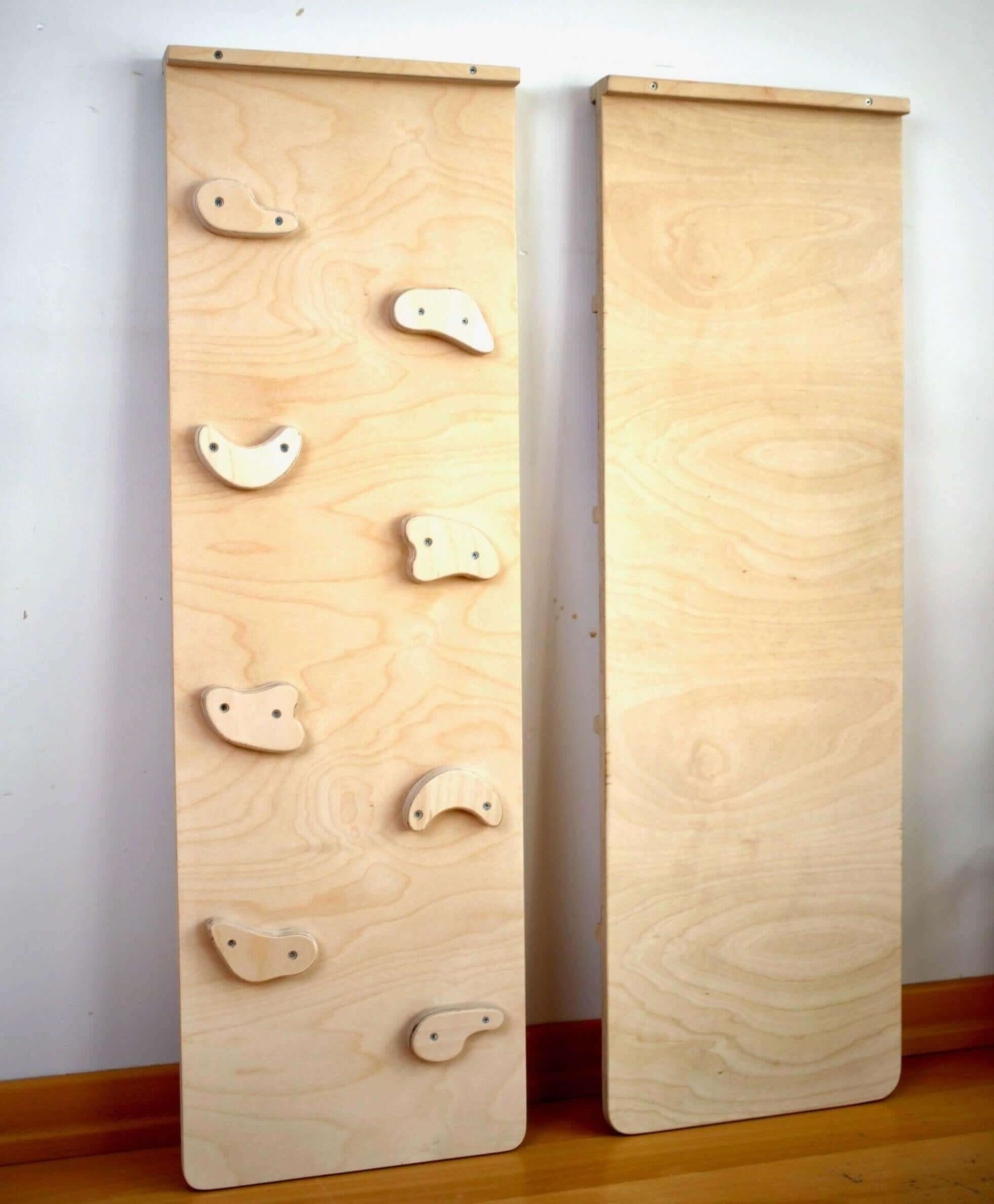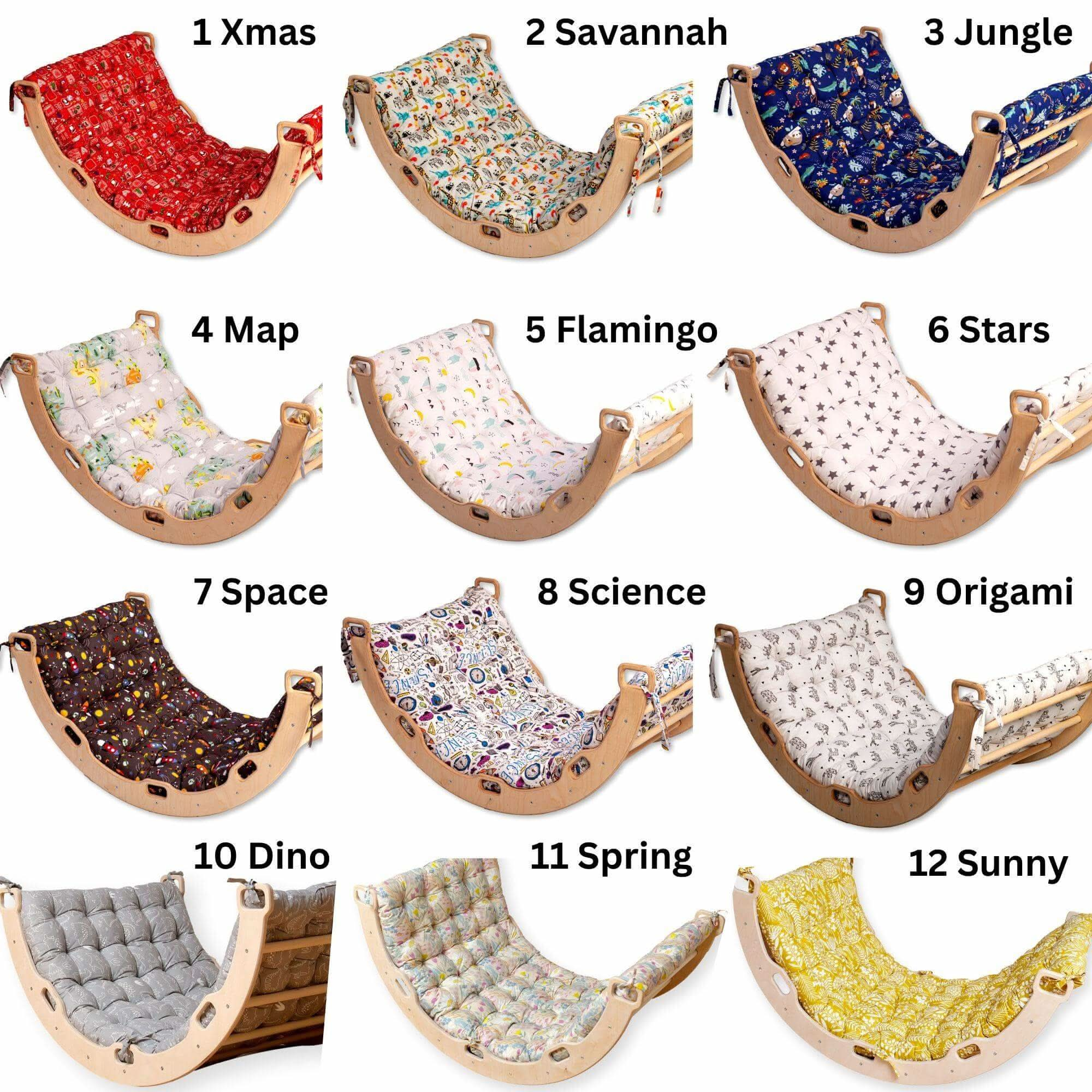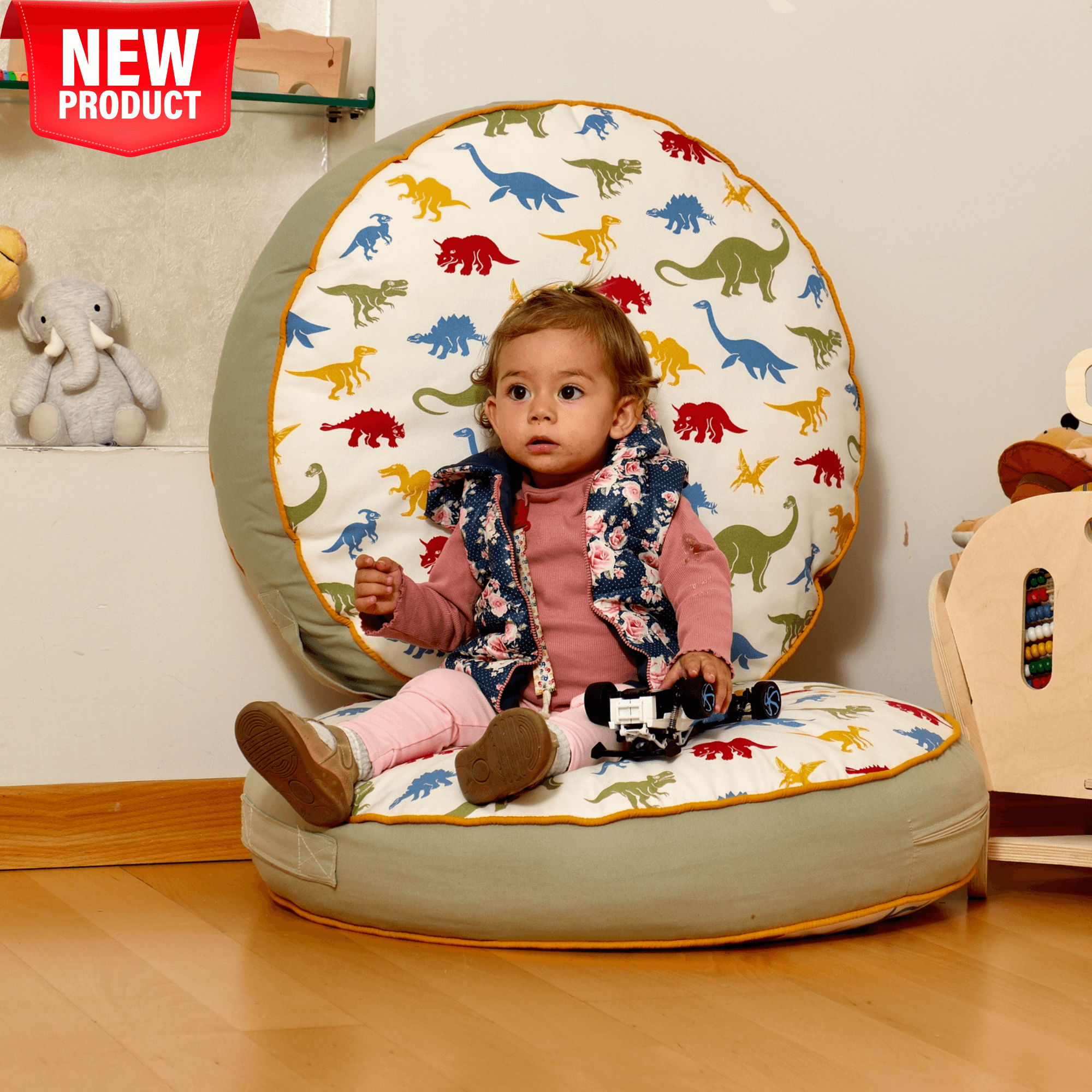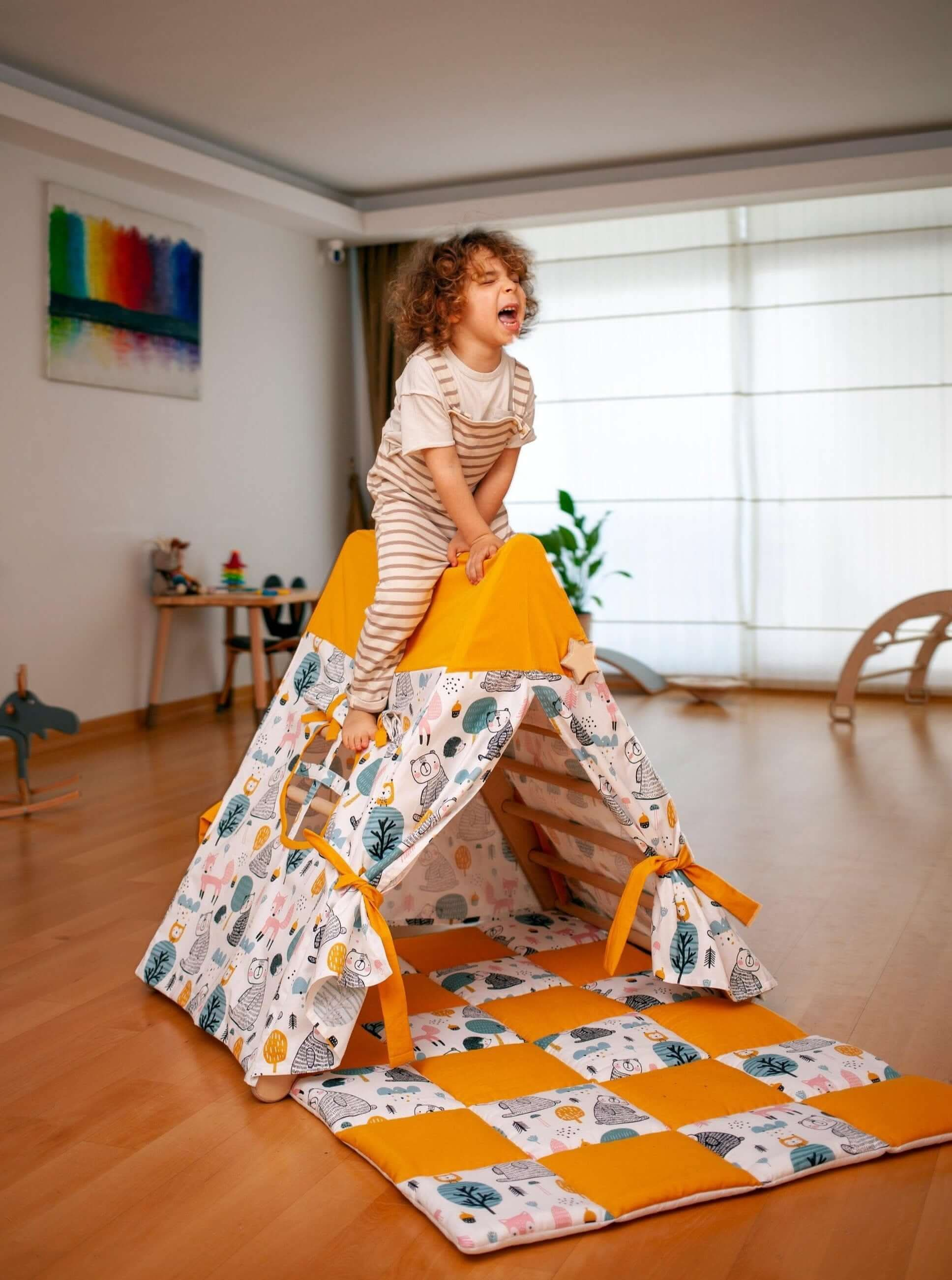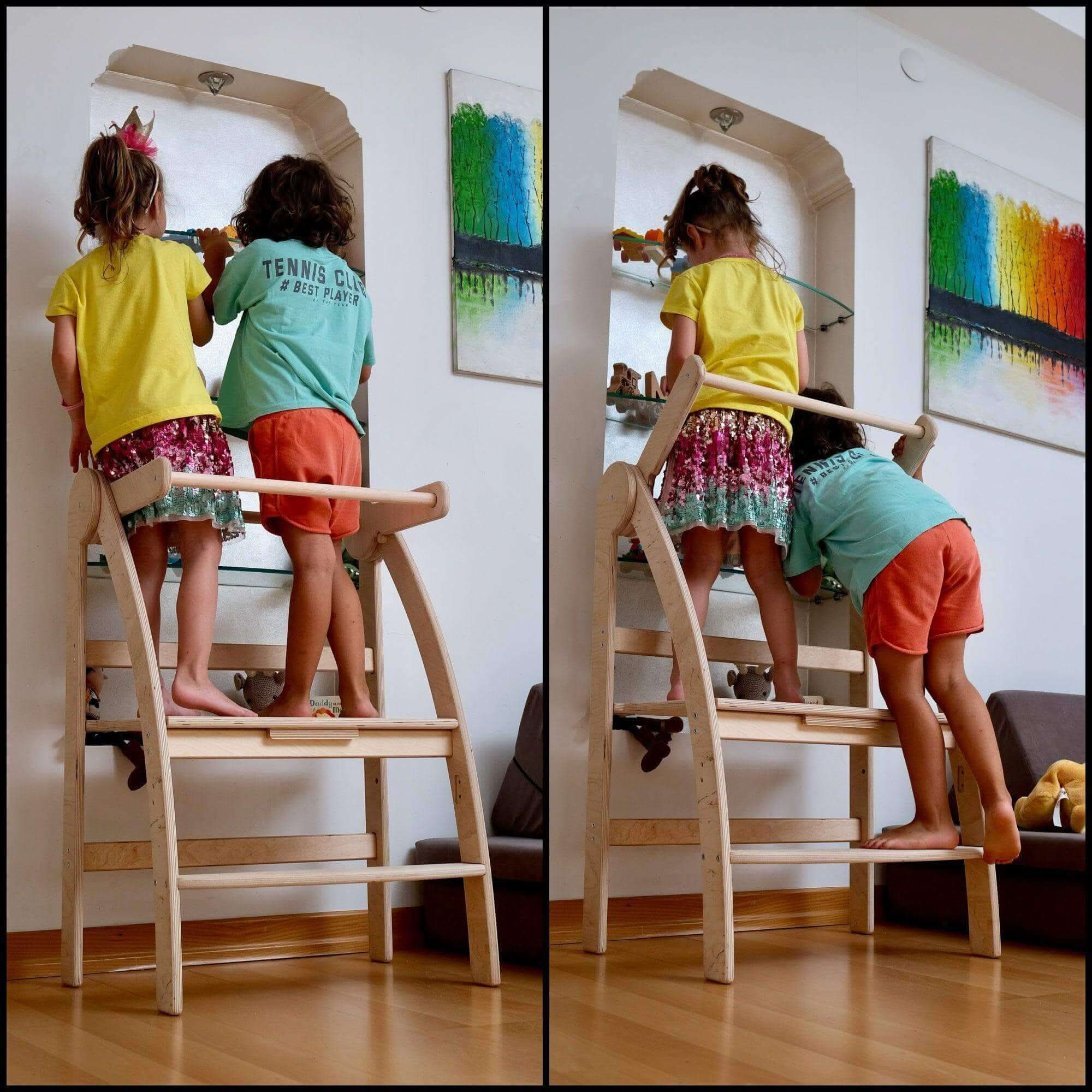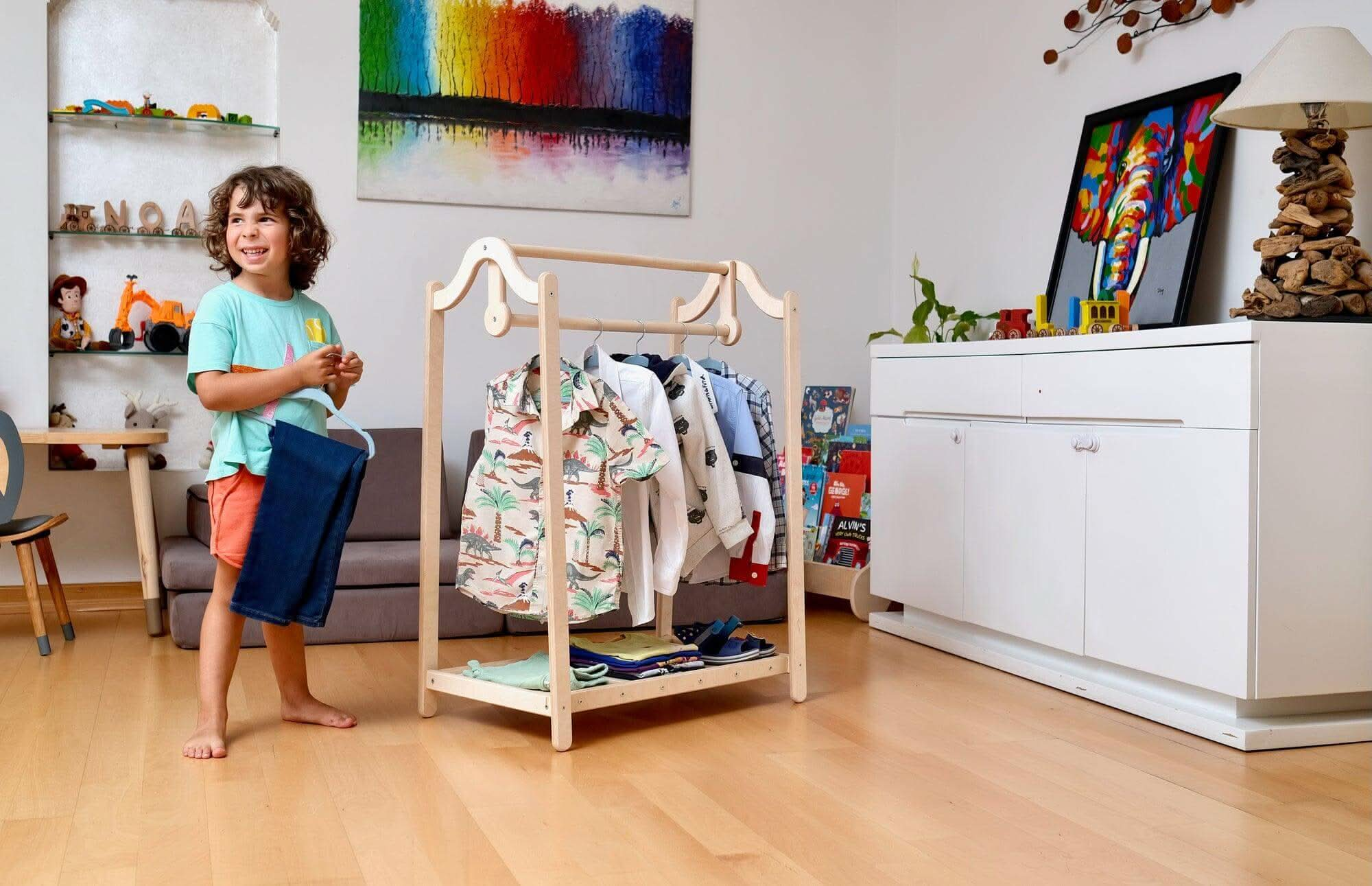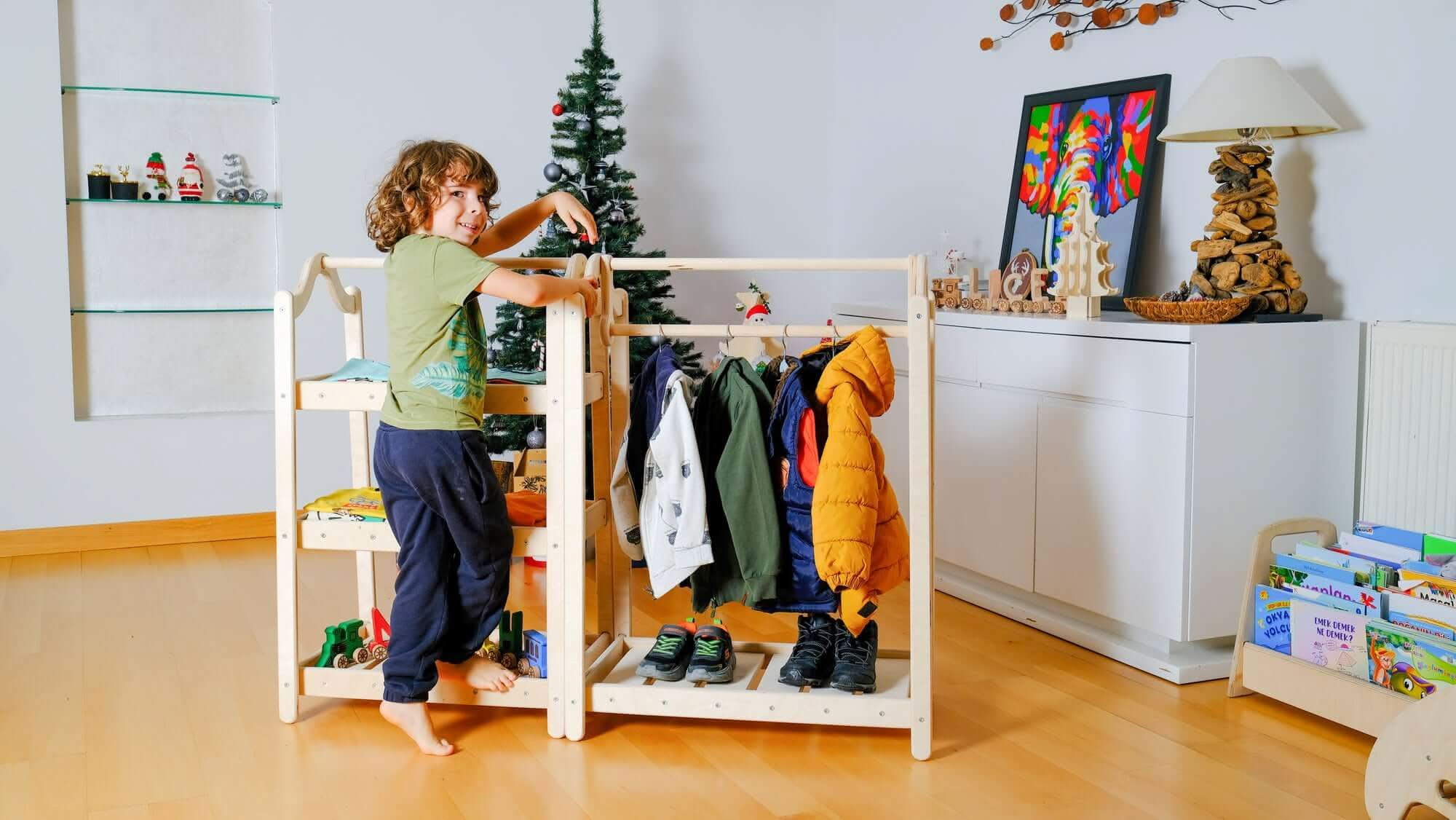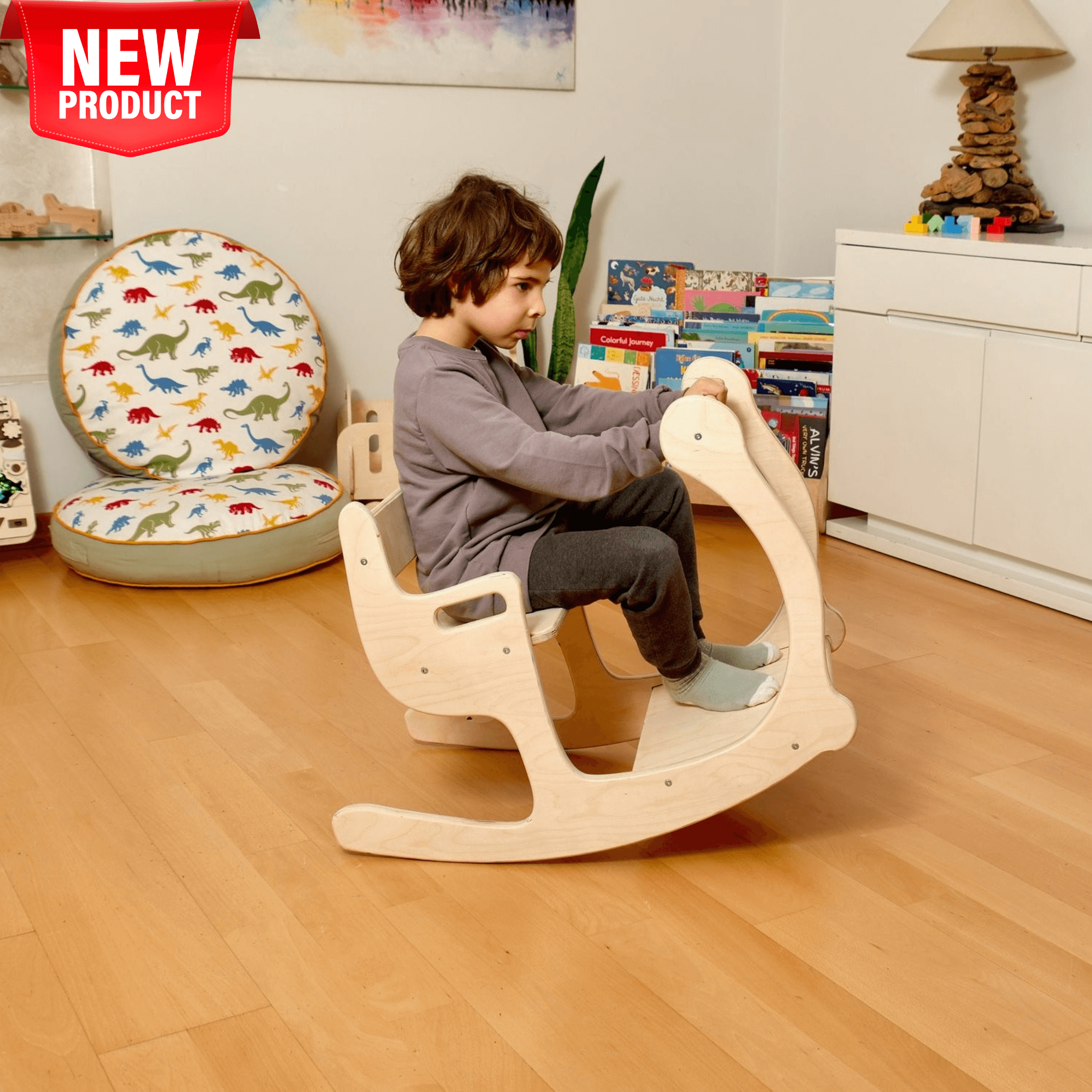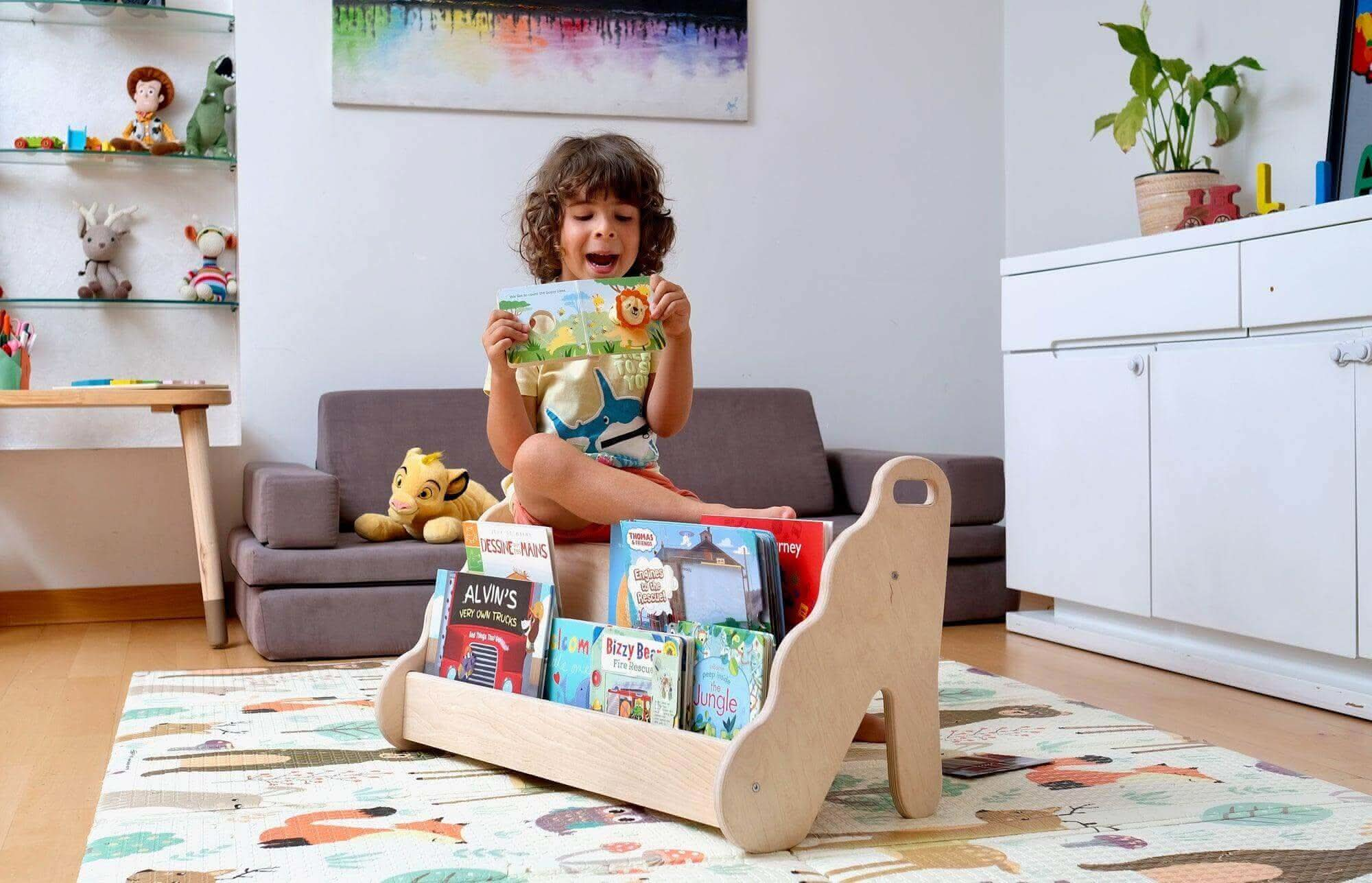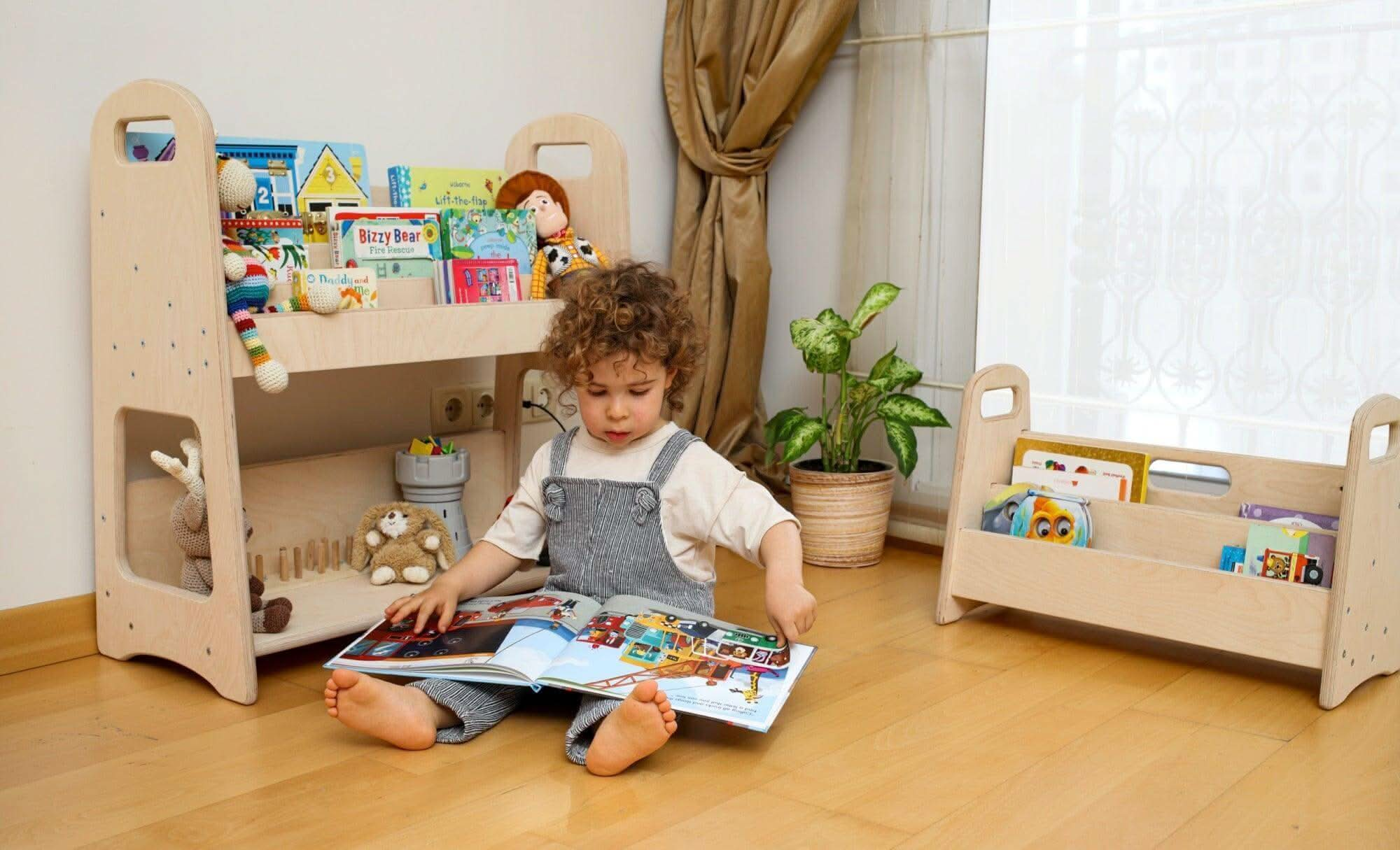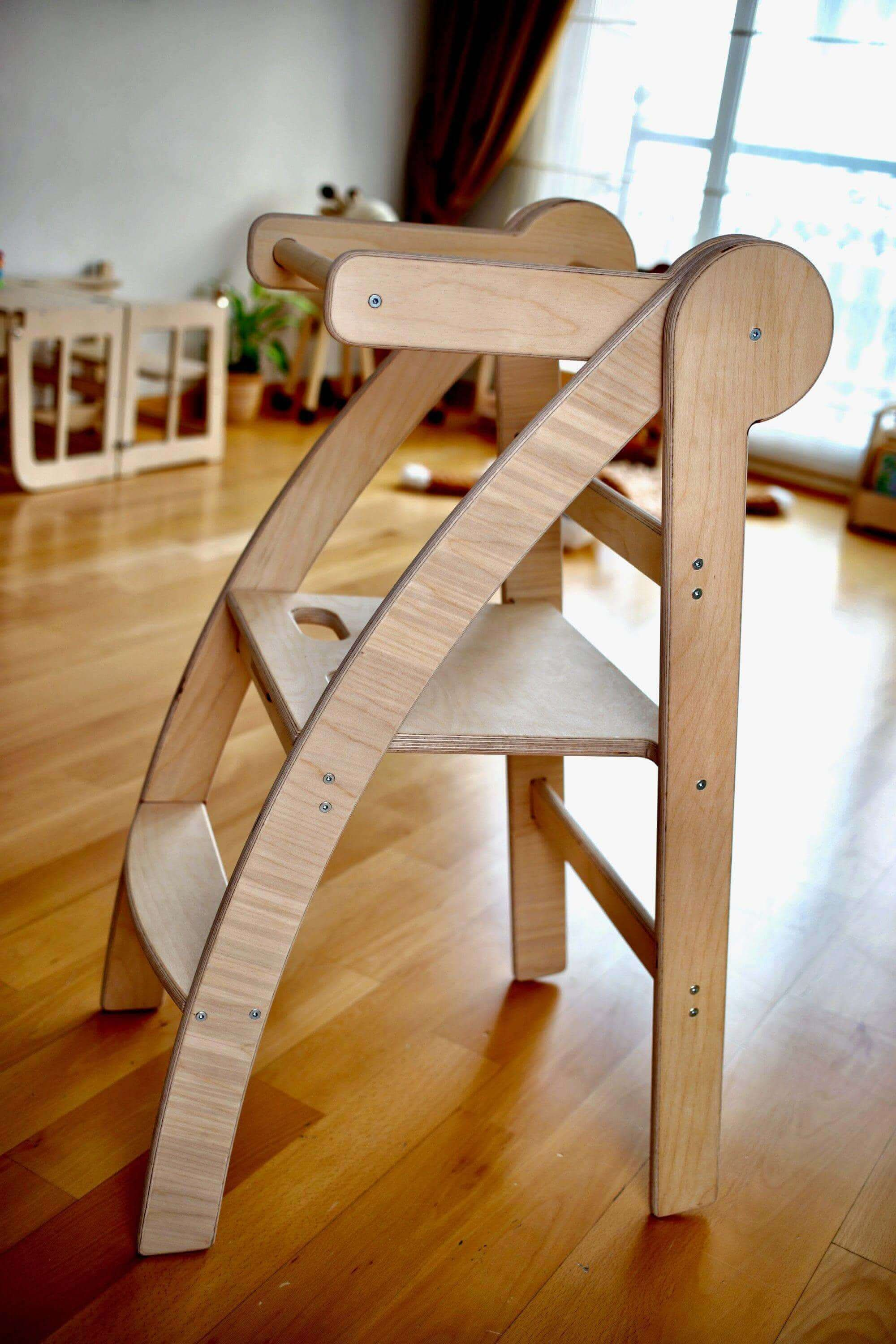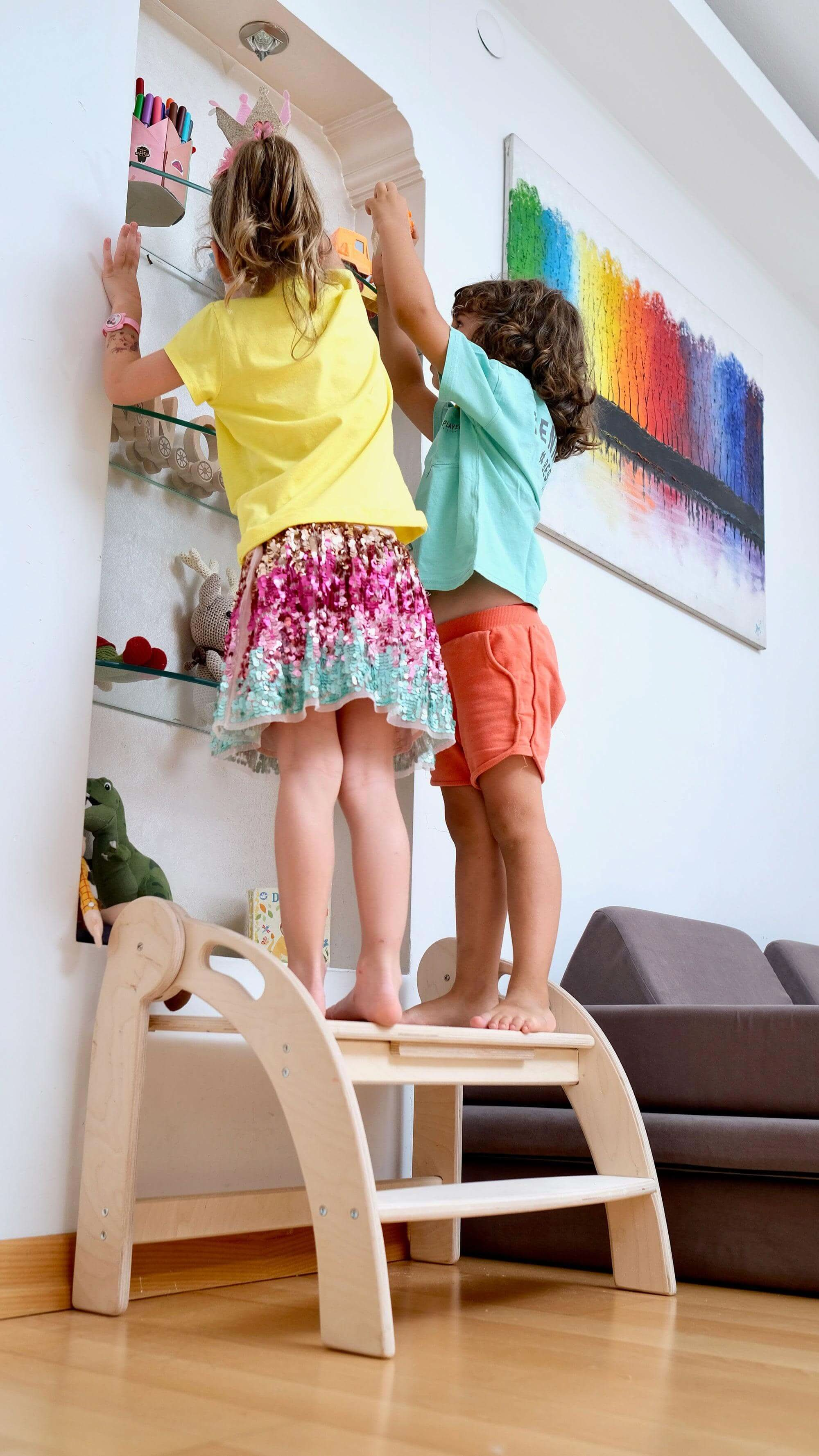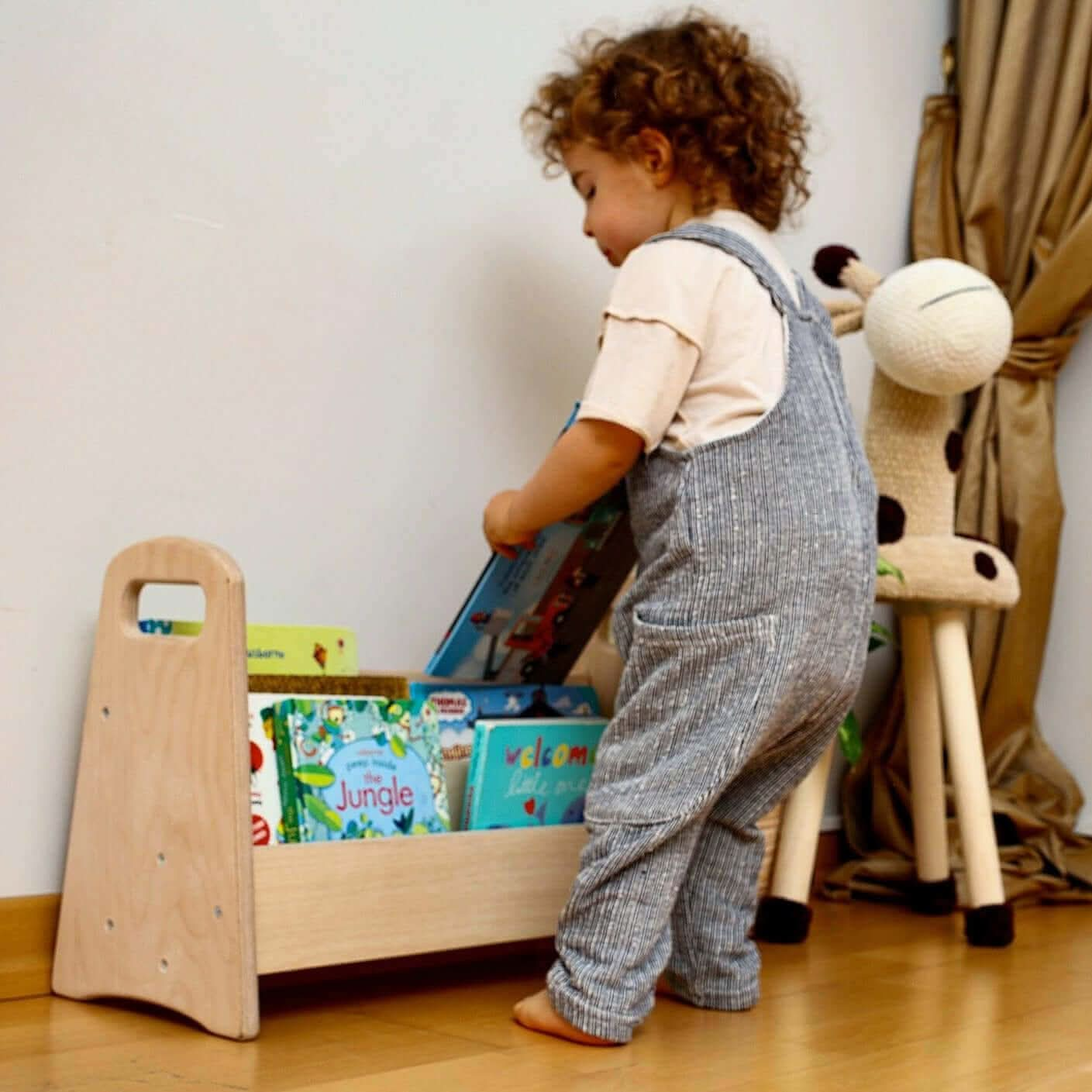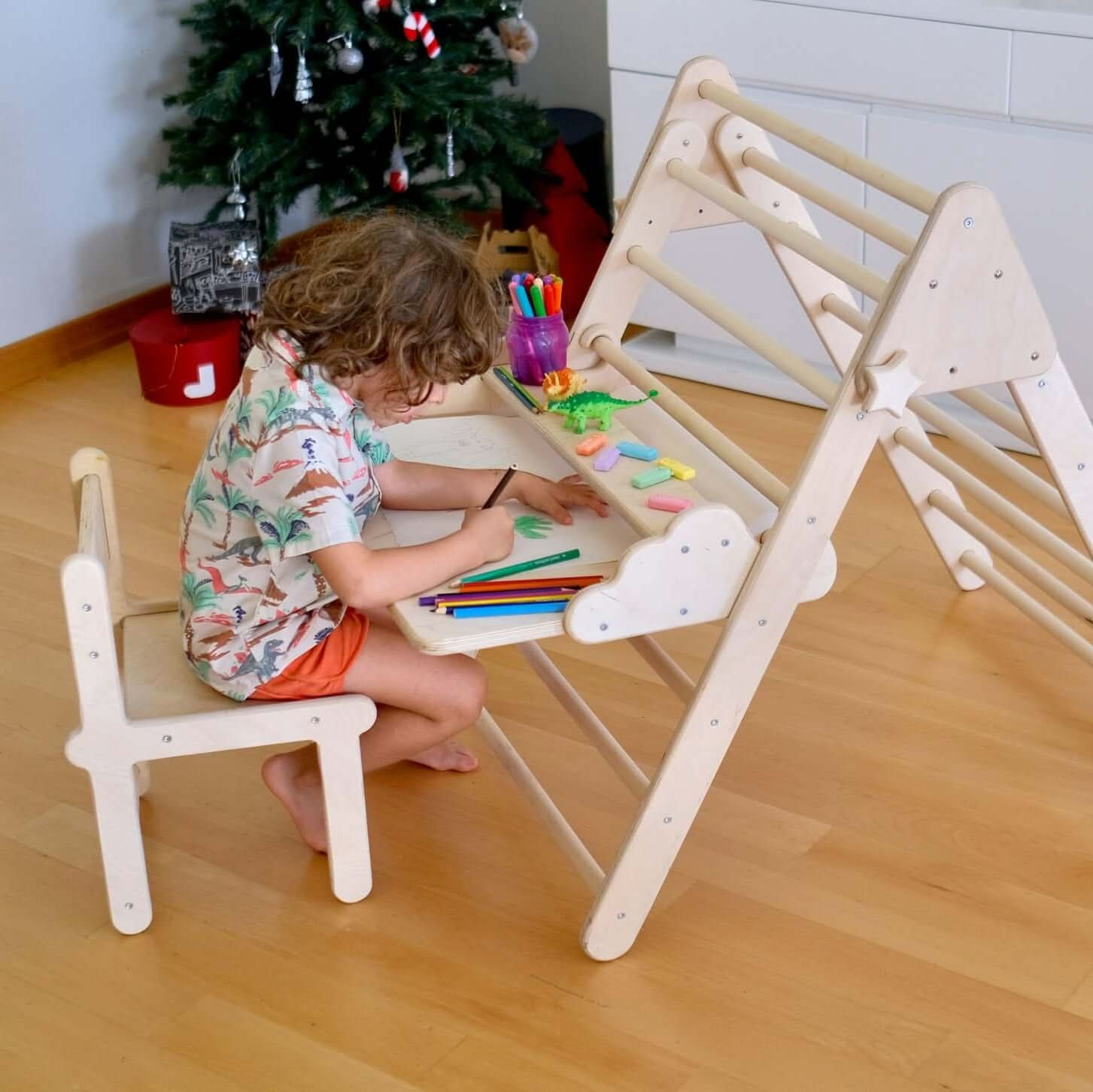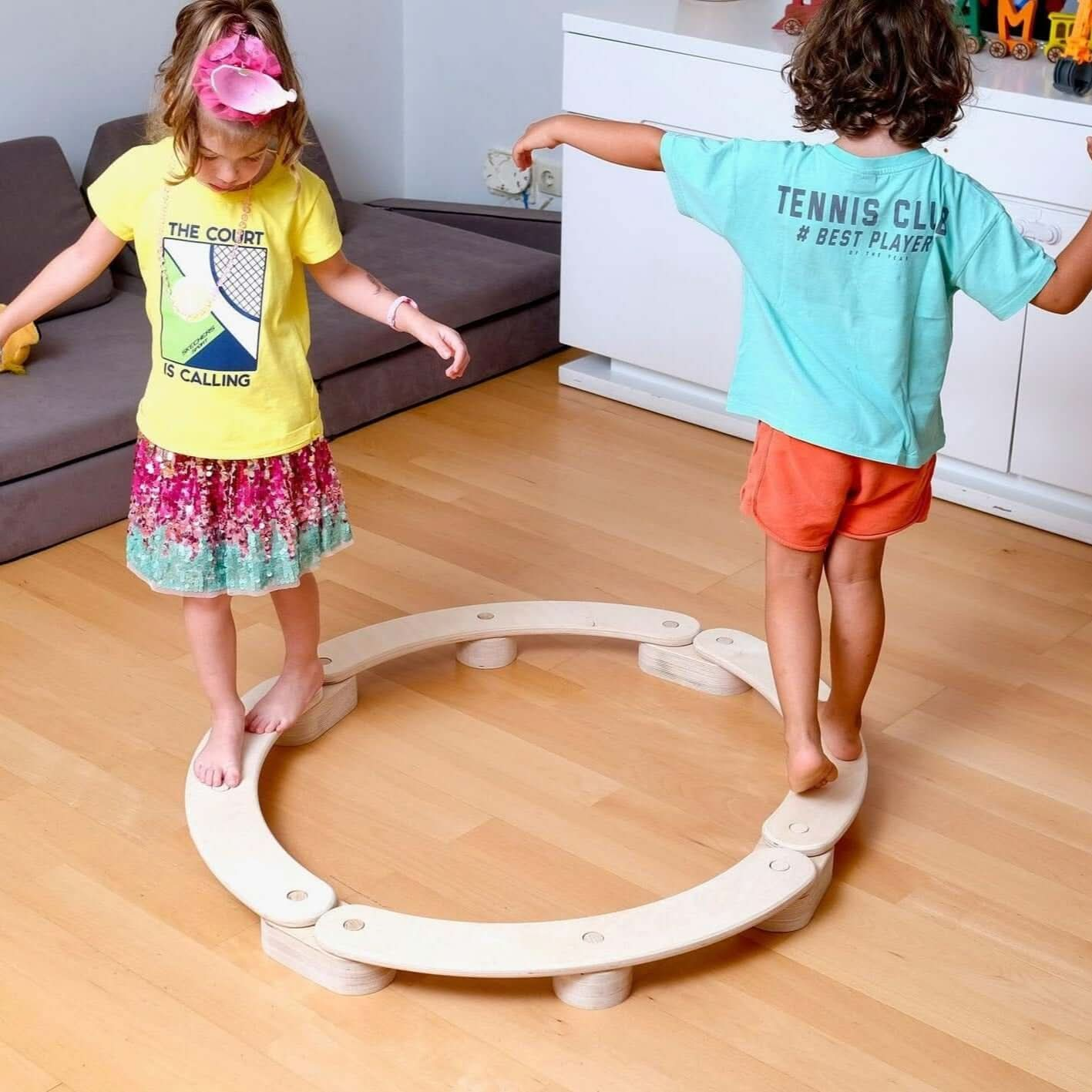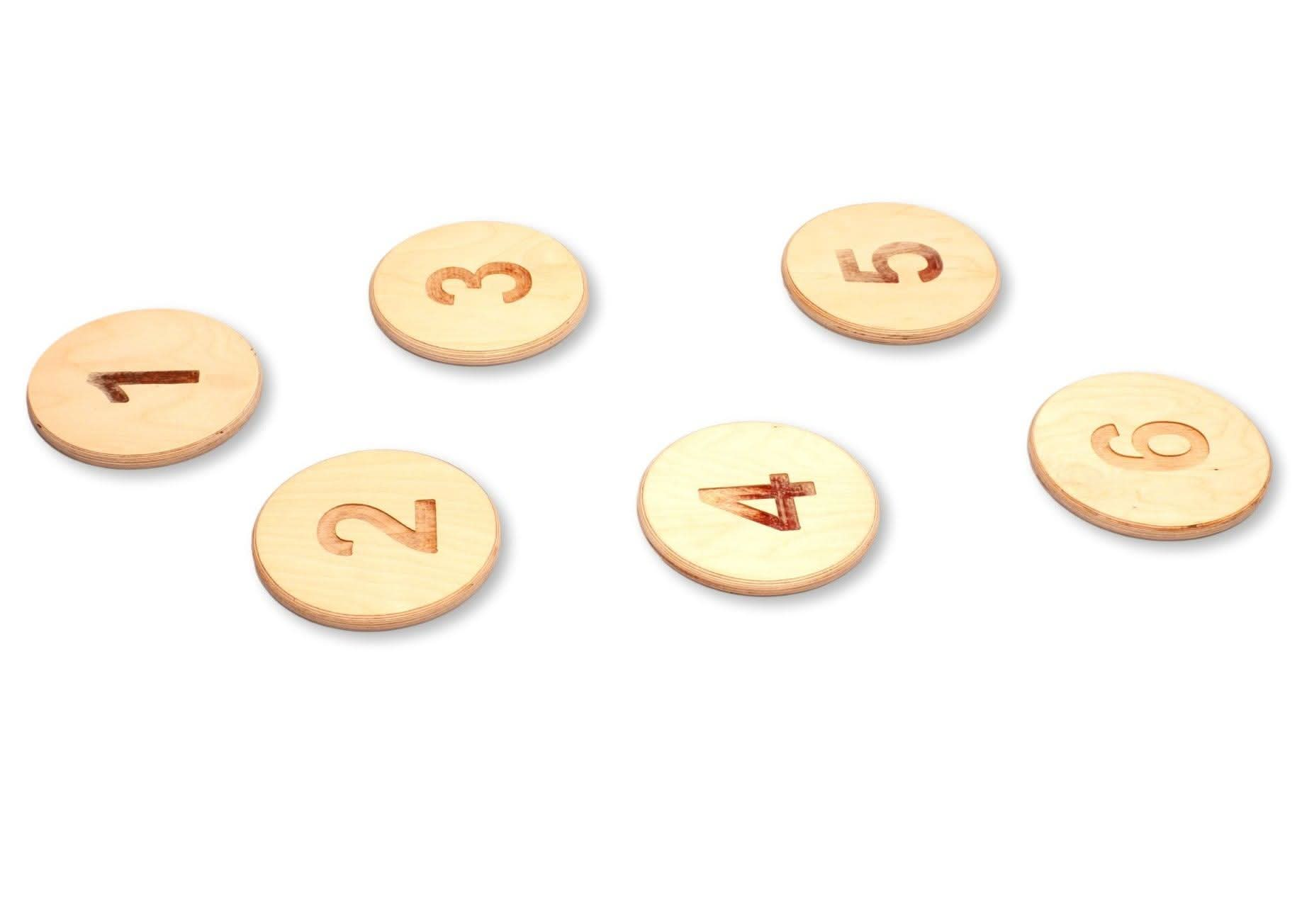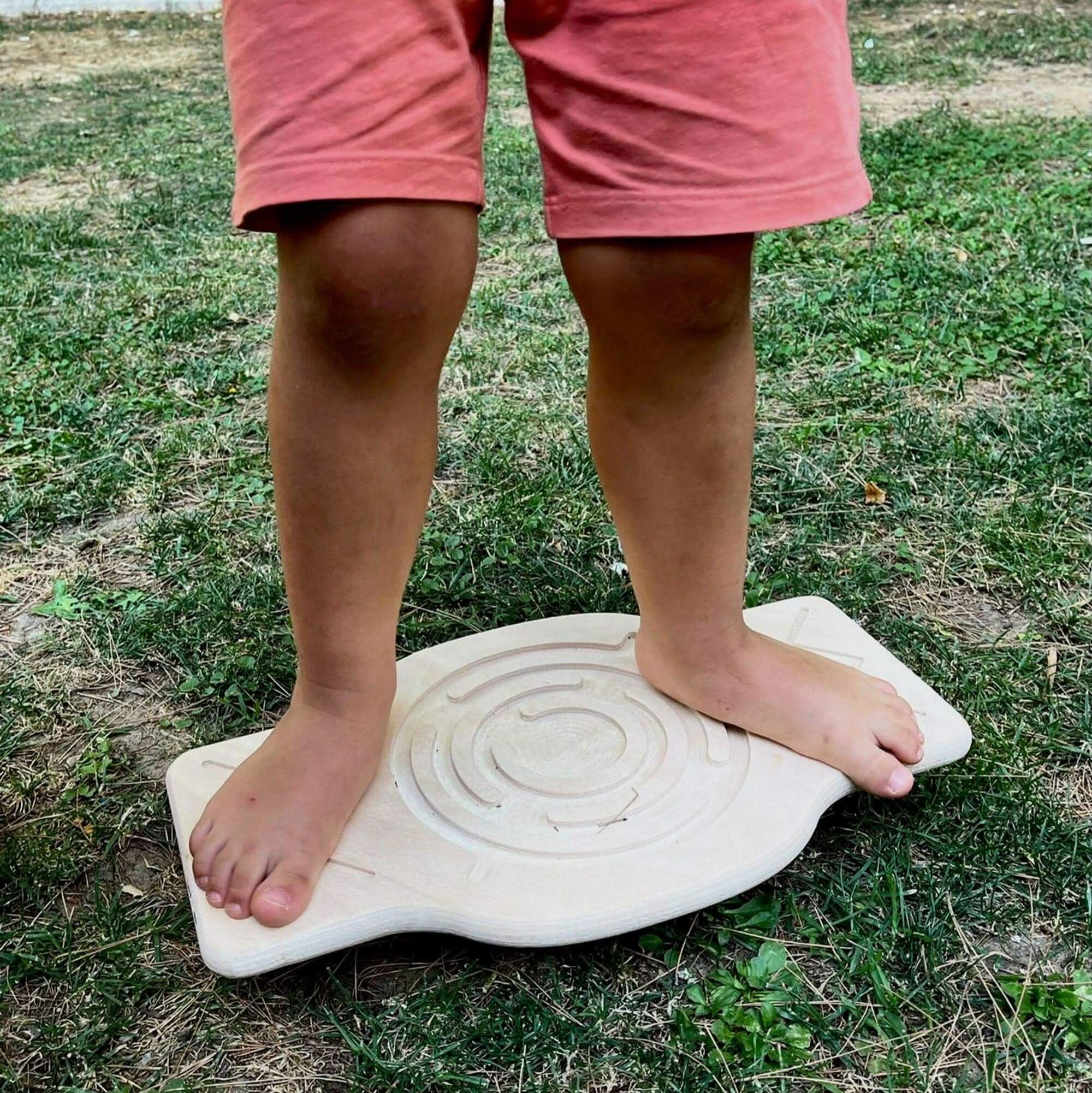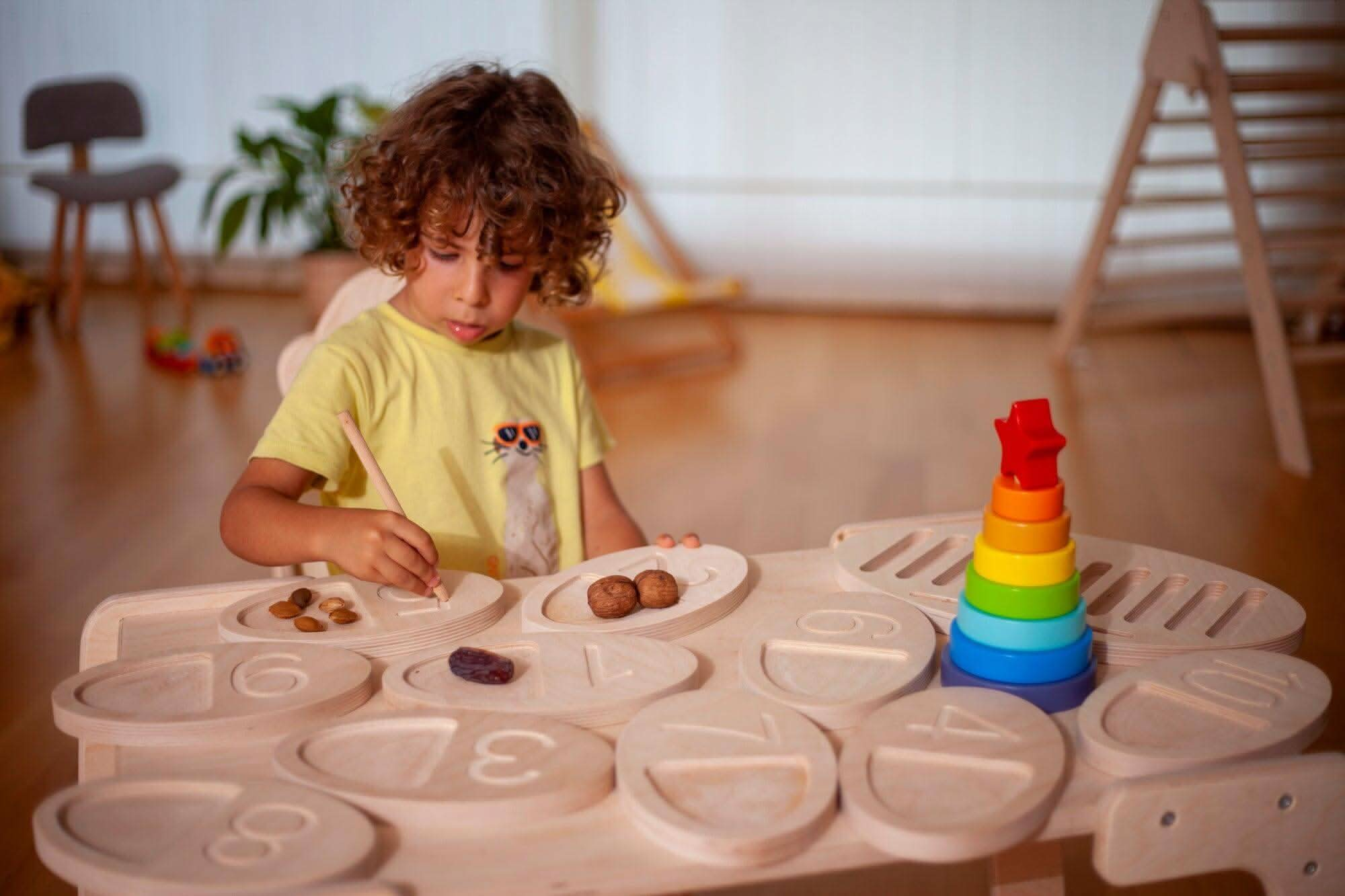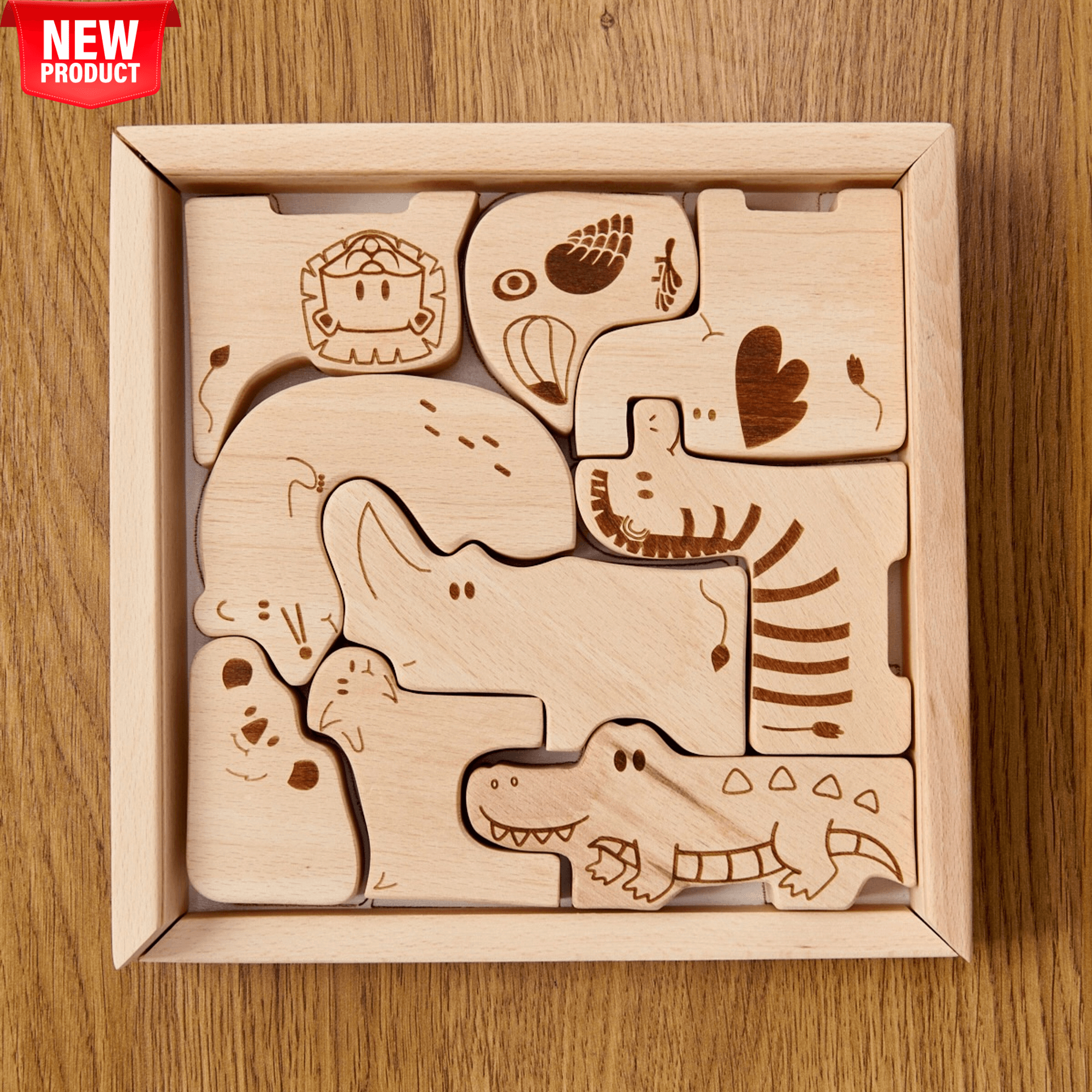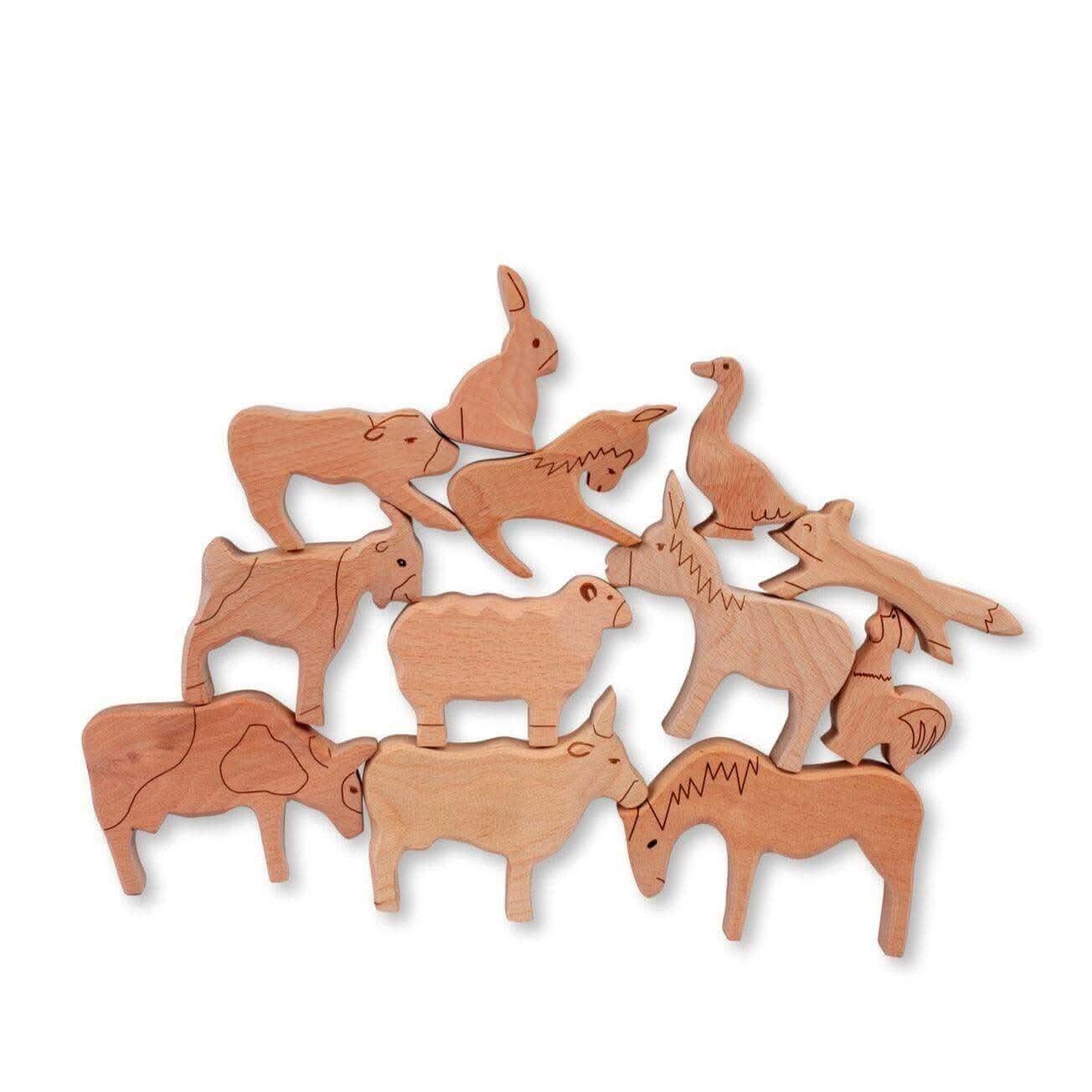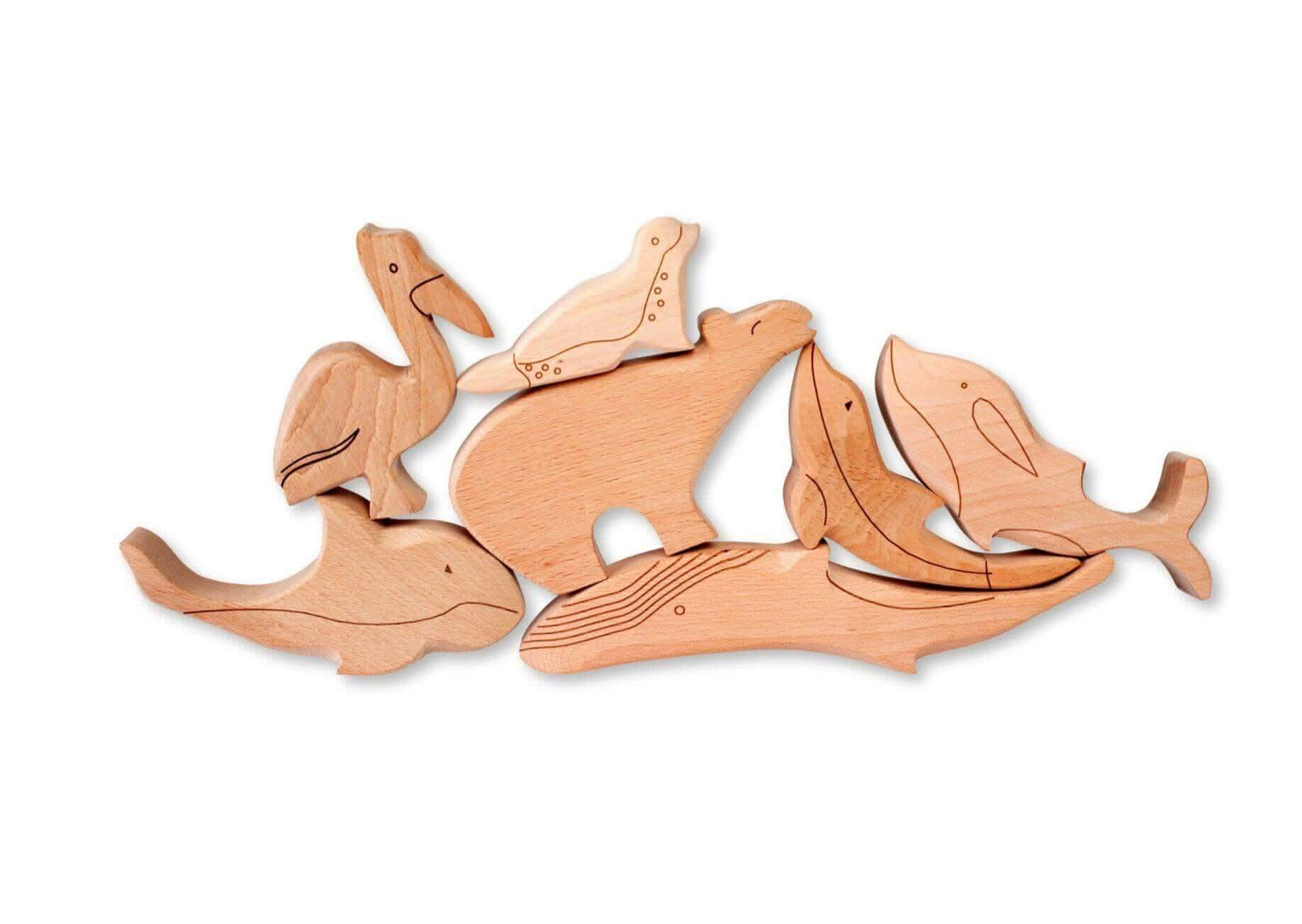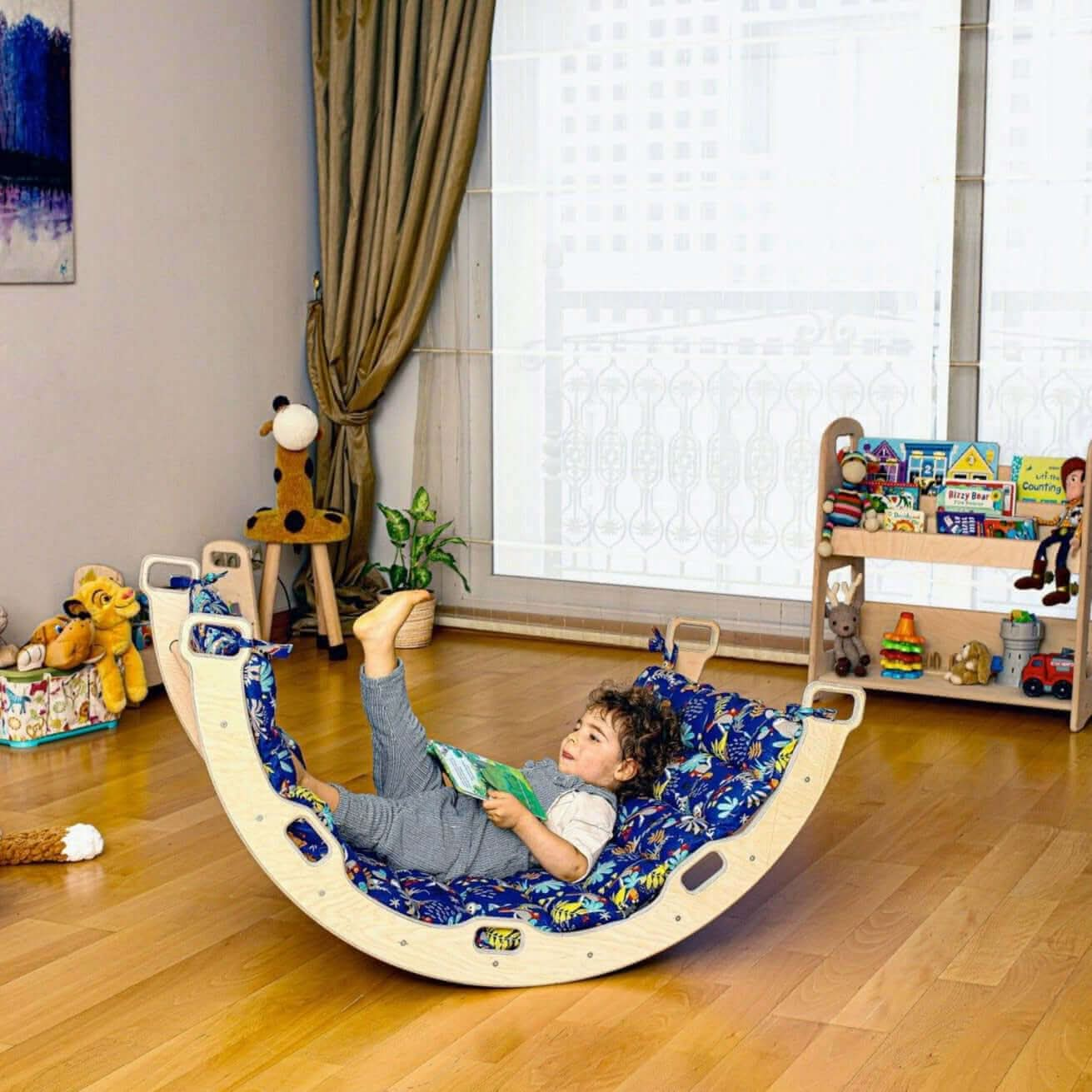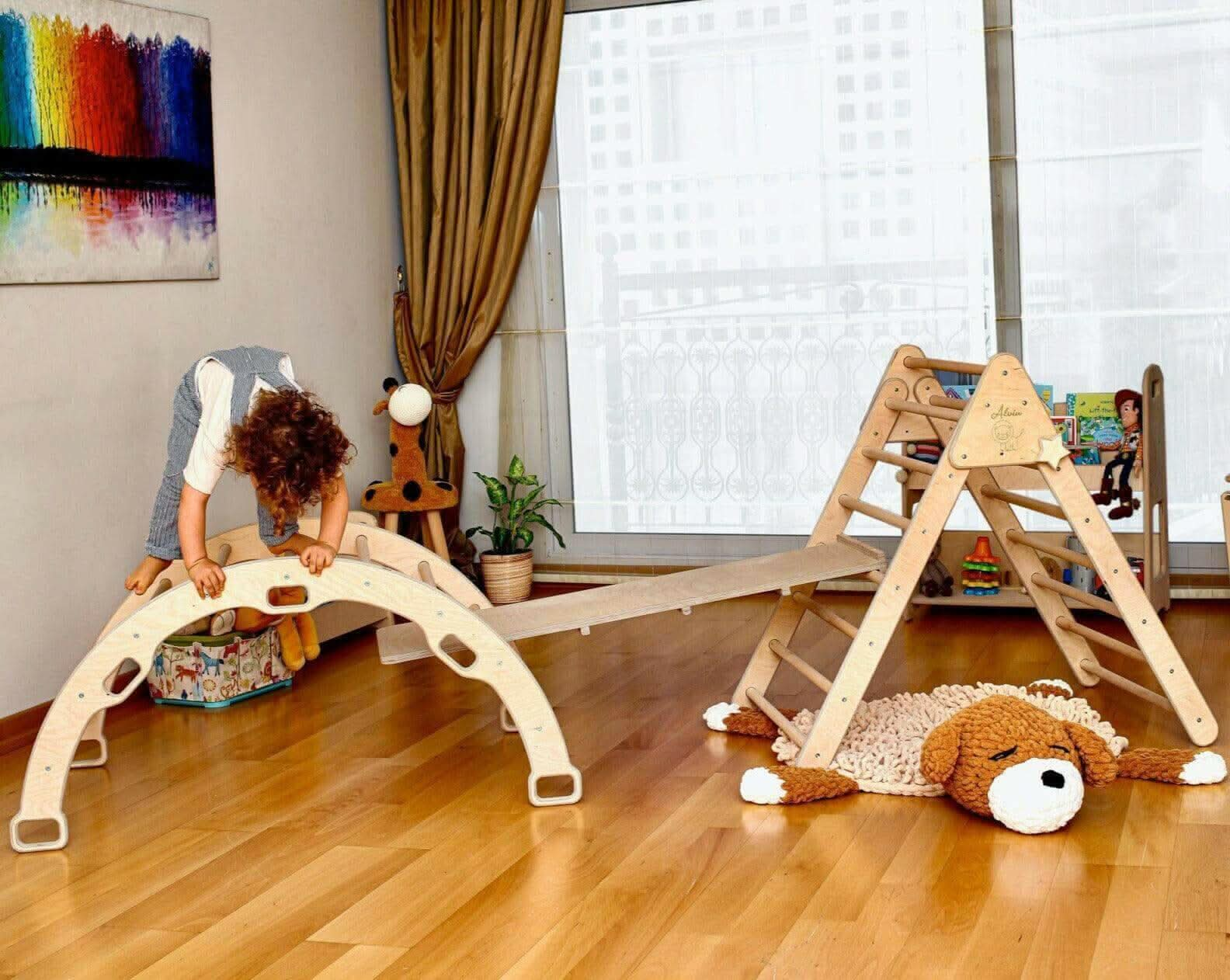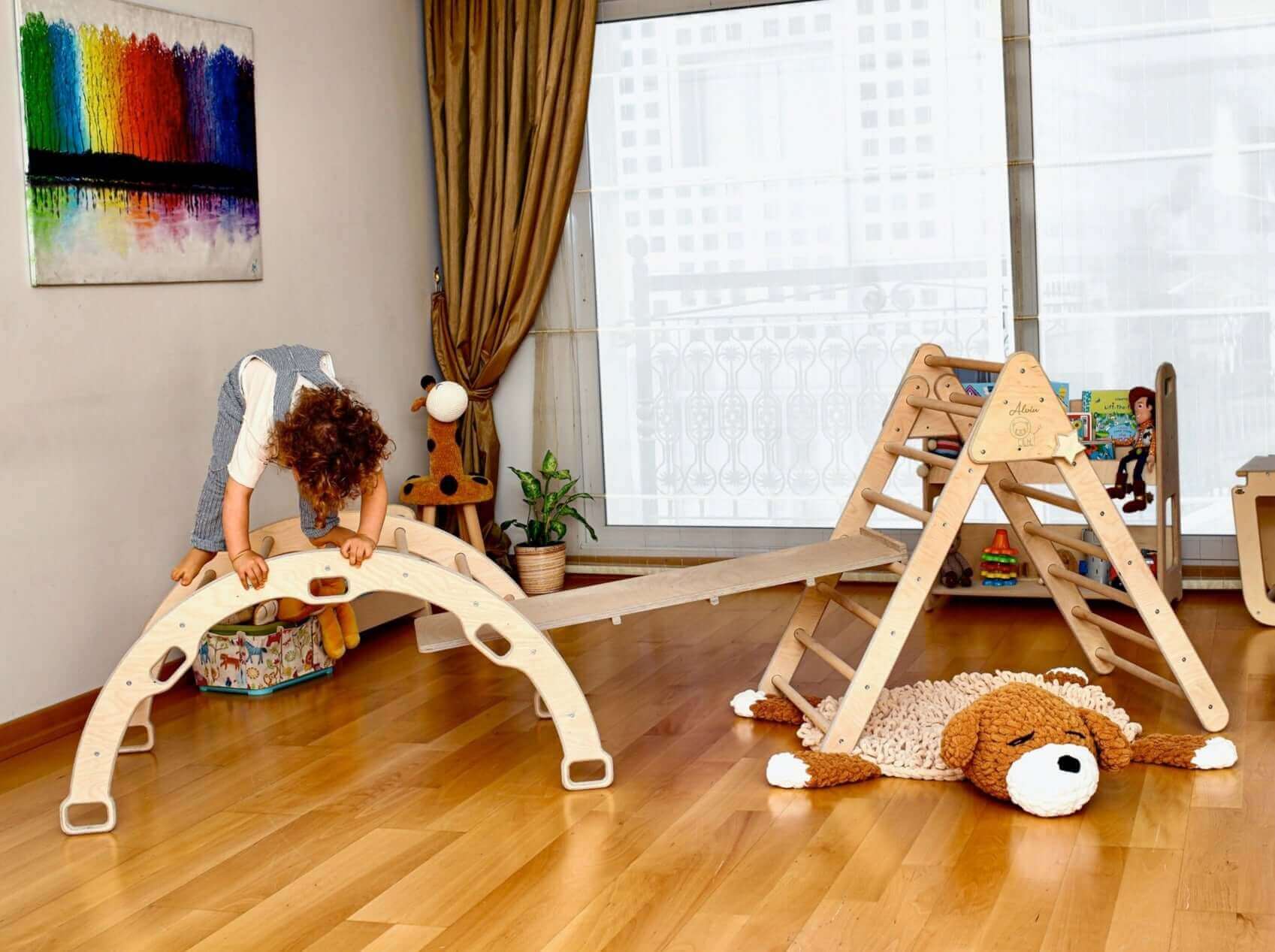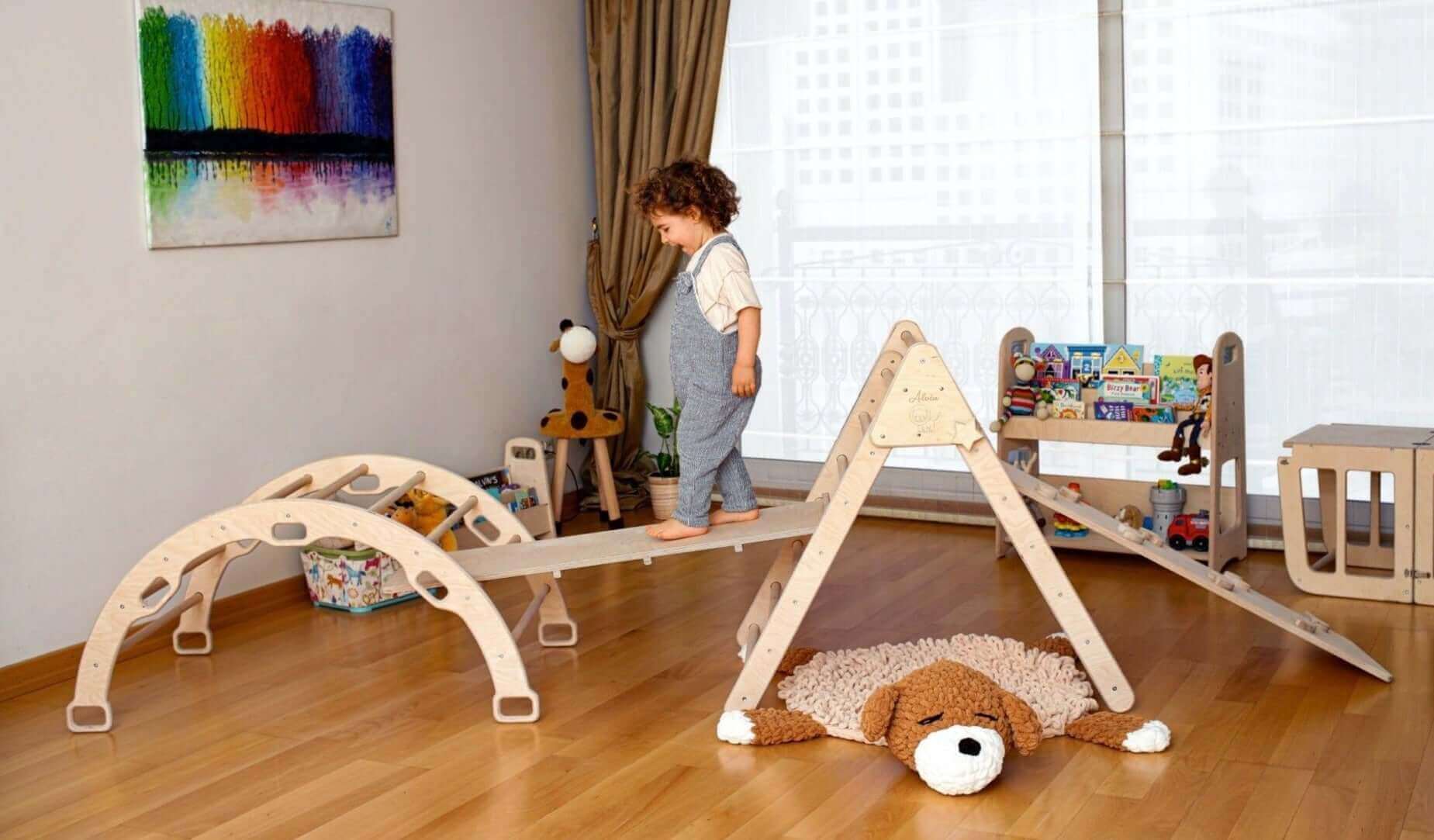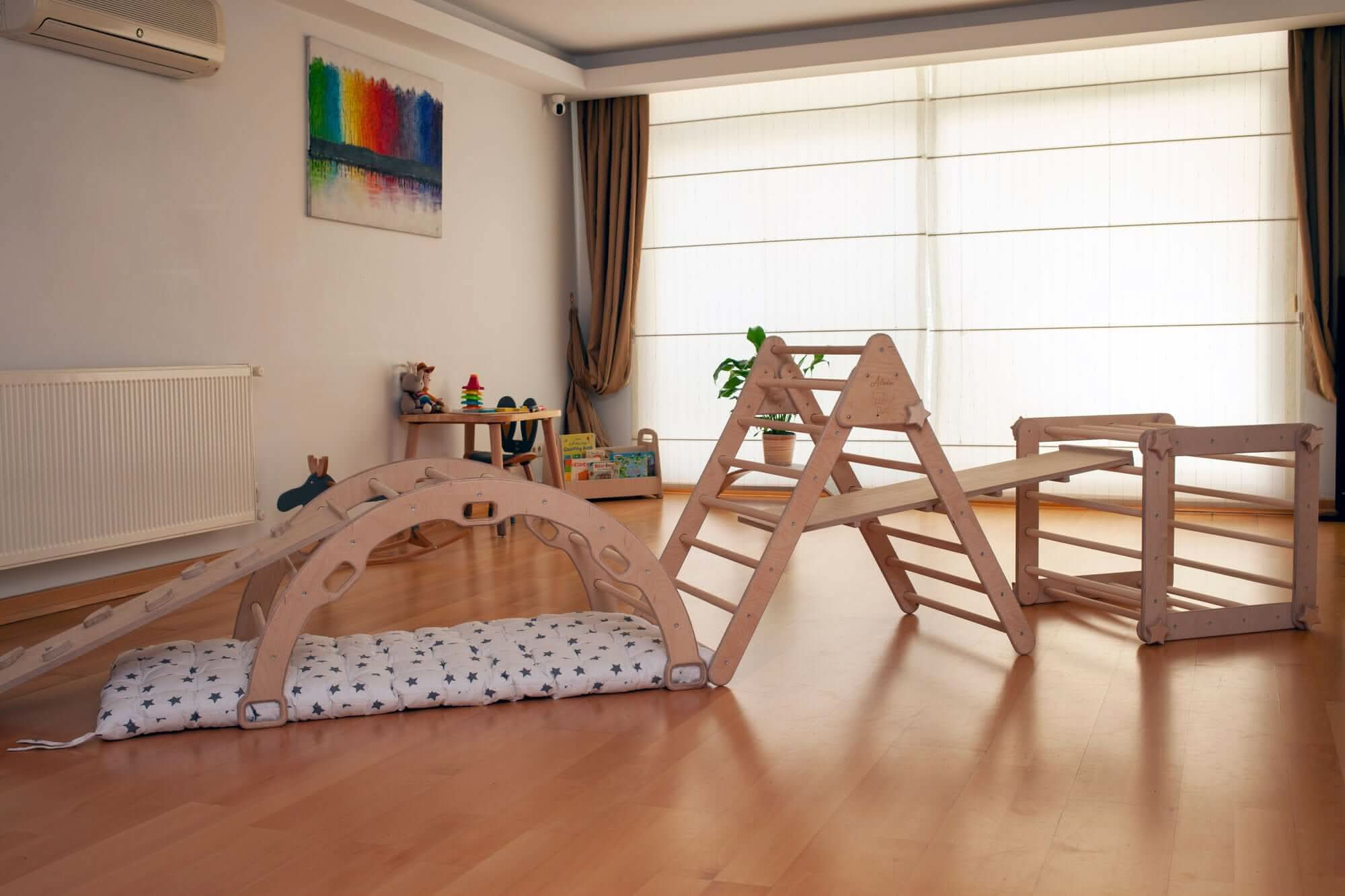
· Von halit burak capraz
Creating the Perfect Montessori Toy Shelf: Organization Tips for Parents
Introduction
Welcome to the delightful world of Montessori learning, where the mantra is "less is more" and every child's curiosity is a treasure to be nurtured. If you're a parent seeking to cultivate an environment that fosters independence and creativity, then the Montessori toy shelf is your new best friend. This isn't just any toy shelf; it's a gateway to a universe where play meets education in the most harmonious way possible.
So, what exactly makes a Montessori toy shelf so special? Think of it as a minimalist haven for educational toys that encourages self-directed activity and hands-on learning. With open spaces, easy accessibility, and child-sized proportions, these shelves are fundamental in nurturing a sense of order while empowering children to make their own choices. But wait—before you picture your living room turning into an Ikea showroom—consider this: simplicity and functionality don't mean sacrificing style or individuality.
The Montessori philosophy emphasizes sustainable living, making eco-friendly toy shelves not only an ethical choice but also an aesthetically pleasing one. You'll find your child engaging more deeply with their toys when they're not overwhelmed by clutter—a lesson many adults could benefit from too!
- Wooden Toy Shelf: Natural materials align with the Montessori ethos of connecting with nature.
- Toddler Learning Shelf: Perfectly sized for little hands to reach and explore comfortably.
- Open-ended Play Shelf: Encourages imaginative play by giving children access to versatile toys.
A well-organized Montessori shelving system could transform your child's playroom into a haven for discovery. Whether you're setting up for a toddler or designing an early childhood education space, these thoughtful setups promote both cognitive and motor skill development. And who knows? You might just learn something about organization yourself!
The journey towards creating the perfect Montessori-inspired home doesn't stop at shelving; it's about curating an environment that resonates with your family's values while enriching your child's developmental journey. Ready to dive deeper? Let’s explore some innovative ideas that’ll have you rethinking how you organize your child’s world!
The Fundamentals of a Montessori Toy Shelf
Embarking on the journey of Montessori education at home might feel like venturing into uncharted territory, but fear not! The heart of creating a functional and inviting environment lies in the humble yet mighty Montessori toy shelf. Think of it as your trusty sidekick, ready to assist in your child's journey towards independence and creativity.
A Low and Accessible Design
The Montessori philosophy emphasizes accessibility for tiny hands and curious minds. A low toy shelf encourages exploration and independence. It's designed so that toddlers can easily see, reach, and select their own toys without adult assistance—freeing you up for other tasks like enjoying that cup of coffee you've reheated three times!
Simple Yet Intriguing Display
Think minimalist chic! A minimalist toy storage approach means displaying just a few items at a time. This not only prevents overwhelming your child but also fosters focus and sustained engagement with each toy. Plus, it keeps clutter at bay. Remember, it's about quality over quantity—like that time you realized one good friend is better than ten acquaintances.
- Rotate toys regularly to maintain interest.
- Select toys that cater to different skills (e.g., motor skills, sensory exploration).
- Incorporate both open-ended play items and specific learning tools.
Sustainable Choices Matter
A well-thought-out Montessori shelving system doesn't just benefit your child—it can help the planet too! Opt for eco-friendly materials like wood for your shelves, which are not only durable but also lend a warm, natural aesthetic to your space. Learn more about sustainable options in our article on the top sustainable toy options.
Encouraging Open-Ended Play
The magic of an educational toy shelf lies in its ability to spark imagination. Stock it with objects that can be used in endless ways—a wooden dinosaur set or farm animal figures are perfect examples of versatile kids' storage options that inspire creative storytelling and role-playing adventures.
By mastering these fundamentals, you're not just organizing toys; you're crafting an environment where learning feels as fun as playtime itself—and isn't that what all parents dream of? So next time you step on a rogue block (ouch!), take solace in knowing it's all part of building a balanced foundation for lifelong learning.
Choosing the Right Materials: Wooden vs. Alternative Options
When it comes to designing a Montessori toy shelf, selecting the right materials is crucial for creating an environment that fosters learning, creativity, and independence. With a myriad of choices available, parents often find themselves in a conundrum: Should they opt for traditional wooden shelves or explore alternative materials? Let's delve into this decision-making process together.
Why Wood? It's Not Just for Lumberjacks
Wooden shelves have stood the test of time for good reason—they're durable, sustainable, and exude a natural aesthetic that complements any child's room. According to the Environmental Protection Agency (EPA), using wood can reduce carbon emissions significantly compared to other building materials. Wood is naturally biodegradable and when sourced responsibly, it promotes sustainable forest management.
- Sustainability: Wooden toy shelves are often crafted from eco-friendly sources. When you choose products like our Wooden Dinosaur Set, you're supporting sustainable practices.
- Durability: Unlike flimsy plastic options, wooden shelves are known for their long-lasting nature. They're not just built to survive the latest toddler rampage but also to be passed down through generations.
- Aesthetic Appeal: The natural beauty of wood enhances any space with its warm tones and unique grain patterns, making it an ideal choice for Montessori-inspired furniture.
The Alternative Avenue: Exploring Other Materials
While wood holds its charm, innovative materials are emerging as contenders in modern Montessori setups. For those looking to break away from tradition or incorporate different textures and styles into their children's spaces, alternatives offer versatility and functionality.
- Plywood: A cost-effective option that provides strength without the hefty price tag. Plywood is often used in minimalist toy storage solutions due to its clean lines and affordability.
- Bamboo: Known as a rapidly renewable resource, bamboo grows quickly and requires no fertilizers. It's a fantastic eco-friendly choice that adds a touch of exotic flair to any playroom.
- Recycled Plastics: While not as traditional as wood, recycled plastic shelving units offer durability and are usually weather-resistant—ideal for those accidental juice spills!
The Balance of Beauty and Functionality
The perfect Montessori toy shelf strikes a harmonious balance between aesthetics and practicality. Whether you're drawn to the timeless appeal of wood or intrigued by contemporary alternatives, the key is to consider what best suits your child's needs while aligning with your values on sustainability and design preferences.
If you're still on the fence about which material suits your little one's play space best, why not explore our guide on the top features of durable furniture? Check out our article on the topic at this link: Top Features To Look For In A Durable Folding Learning Tower.
Optimizing Toy Selection for Educational Value
Selecting the right toys for your Montessori toy shelf is much like choosing the perfect ingredients for a gourmet meal. It’s all about balance, quality, and a sprinkle of imagination. The goal is to offer toys that foster creativity, problem-solving skills, and cognitive development—without overwhelming your child with choices.
1. Focus on Open-Ended Play
Open-ended play toys are akin to a blank canvas, allowing children to project their fantasies without limitations. A simple set of blocks or our very own Wooden Farm Animals Set can transform from a farmhouse one day to an enchanted forest the next. Such toys encourage imagination, adaptability, and help develop fine motor skills.
2. Prioritize Safety and Sustainability
The safety of the materials should always be paramount in your selection process. Opt for toys made from sustainable materials like responsibly sourced wood or non-toxic paints. This not only ensures the well-being of your child but also contributes to a healthier planet. According to the Center for Environmental Health, choosing eco-friendly toys reduces harmful chemical exposure (Source: Center for Environmental Health).
3. Choose Age-Appropriate Options
- 0-12 Months: Look for sensory-rich items with varied textures and sounds.
- Toddlers: Favor toys that promote problem-solving and language skills.
- Preschoolers: Opt for puzzles and interactive tools that encourage cognitive growth and social interaction.
Bouncing back to our culinary metaphor, when you blend these ingredients—open-ended play, safe materials, and age suitability—you whip up a recipe that supports wholesome early childhood development.
Avoid Overloading with Too Many Toys
A Montessori style organization favors quality over quantity. Like an overstuffed closet that makes picking out clothes daunting (and let’s be honest—more fashion faux pas), too many toys can overwhelm a child rather than engage them. A tidy playroom with carefully selected educational toy shelves can enhance focus and enjoyment during playtime.
The perfect Montessori toy shelf is not just about aesthetics; it's about crafting an environment where learning naturally unfolds through play—a setting where children feel free to explore, imagine, and grow at their own pace.
Designing an Effective Layout: Minimalist Toy Storage Ideas
When it comes to creating a Montessori toy shelf, embracing minimalist storage ideas can not only enhance the aesthetic appeal of your child’s play area but also significantly boost their learning experience. The Montessori method emphasizes simplicity and order, encouraging children to explore their environment and engage in self-directed activities. So, how can you design an effective layout that resonates with these principles? Let’s dive into some innovative and practical ideas.
The Essence of Simplicity: Less is More
- Limit the Options: A minimalist approach means curating a selection of toys that encourage open-ended play. Choose versatile toys like the Wooden Dinosaur Set, which can be used in multiple ways, sparking creativity while avoiding clutter.
- Categorize and Display: Organize toys by category – think blocks, animals, puzzles – on different shelves or sections. This not only aids in quick cleanup but also helps toddlers make connections between similar types of play.
- Rotate Toys Regularly: Keep interest levels high by rotating toys every few weeks. This strategy prevents overstimulation and allows children to rediscover forgotten items anew.
Sleek Design: Choosing the Right Shelves
A well-chosen shelf can transform a chaotic room into a serene learning environment. Here’s what to look for:
- Low Toy Shelf: Opt for shelves that are low to the ground, allowing little ones easy access and promoting independence. This empowers children to choose their own activities, fostering decision-making skills.
- Sustainable Materials: Invest in eco-friendly toy shelves made from sustainable materials like bamboo or reclaimed wood. This not only supports environmental consciousness but also teaches kids about responsible consumption from an early age.
- Child-Friendly Designs: Look for shelves with rounded edges and sturdy construction to ensure safety during playtime explorations.
The Magic of Open Spaces: An Inviting Play Environment
A minimalist approach doesn't just stop at shelving; consider the entire room layout too. Leave space for a cozy reading nook or a small activity table where creativity can flourish without bounds. Encourage your child to use these spaces freely, whether it's building an elaborate block tower or reenacting scenes with their beloved Wooden Farm Animals Set. The key is flexibility and encouragement for imaginative exploration.
An organized toy shelf designed with minimalism in mind can make a world of difference in creating a harmonious environment that fosters growth through play. By focusing on quality over quantity and functionality over flair, you’re setting up your child for endless opportunities to learn through joyful discovery.
Implementing a Montessori Style Organization System
Stepping into the enchanting world of Montessori organization is like finding the secret recipe for a stress-free playroom—one that even Marie Kondo would applaud. The Montessori toy shelf, often hailed as the minimalist's dream, is designed not just to declutter but also to empower our tiny humans with the skills of independence and order. Here's how you can transform your child's space into an educational wonderland using Montessori principles:
1. Embrace Simplicity and Accessibility
- Low Shelving: Opt for low toy shelves that encourage your child to explore independently. The goal is to keep everything within their reach, making it easy for them to access toys and books on their own.
- Open Display: Instead of stashing away toys in bins, use open-ended play shelves to display items visibly. This not only makes selection easier for your child but also teaches them organization and responsibility.
- Sustainable Materials: Choose eco-friendly toy shelves crafted from sustainable materials like wood. Not only are these aesthetically pleasing, but they are also durable and safer for children.
2. Categorize with Purpose
If you're using a wooden toy shelf or any other Montessori inspired furniture, organizing by category can make all the difference. Group similar items together—like art supplies with art supplies, building blocks with building blocks—to create an intuitive flow that supports cognitive development.
3. Rotate Toys Regularly
This tactic keeps the play space fresh and engaging without overwhelming your child. By rotating toys in and out of storage, you maintain an element of surprise while preventing overstimulation. Think of it as curating a miniature art exhibit that evolves with your child’s interests!
4. Incorporate Versatile Play Items
Select toys that offer multiple ways to play or learn (hello, wooden dinosaur set!). These items grow with your child and support diverse developmental skills—perfect for an imaginative play area setup guide! You can explore options from our collection of Montessori toys here.
"Order is one of the needs of life which, when it is satisfied, produces a real happiness." — Maria Montessori
The Result: A Functional Play Space That Grows With Your Child
A well-organized Montessori shelving system does more than just tidy up a room; it fosters a sense of autonomy and decision-making in children as young as toddlers. Plus, isn't it lovely when you don’t have to wade through piles of toys just to find one missing puzzle piece?
Tidying Up: Tidy Playroom Solutions & Sustainable Practices
Creating a tidy playroom not only keeps your home looking less like a post-tornado disaster zone but also offers significant benefits to your child’s developmental journey. A well-organized space with a montessori toy shelf fosters independence, concentration, and responsibility in children.
Embrace the Magic of Minimalism
The first rule of thumb for tidying up is embracing a minimalist approach. Have you ever noticed how children always seem magnetically drawn to the one toy that’s buried under an avalanche of others? Keeping only a select few toys available encourages focus and imaginative play. Consider investing in a minimalist toy storage solution that includes elements like a low toy shelf or open-ended play shelves.
Sustainability Meets Practicality
No parent wants to contribute to the landfill more than necessary, so opting for sustainable toy storage solutions is both eco-conscious and practical. Look for storage options crafted from sustainable materials such as bamboo or reclaimed wood. These materials not only support environmentally friendly practices but often prove to be more durable. A win-win for parents and Mother Earth!
- Eco-Friendly Materials: Opt for shelving made from bamboo or recycled wood.
- Durable Designs: Choose items built to withstand the energetic enthusiasm of young ones.
- Flexibility: Select adjustable shelves that can grow with your child's needs.
Clever Storage Ideas That Spark Joy... and Laughter!
A good laugh can make any cleanup session feel less daunting. Consider labeling bins with fun icons or quirky names like "Tiny Dinosaurs" or "Magical Blocks." This not only makes it easier for your little one to help tidy up but also adds an element of playfulness to the routine.
An inspiring example might be creating a dedicated section on your montessori shelving system, where educational toys and activities are neatly displayed at eye level, inviting exploration and learning.
Paving the Pathway to Independence
A clean, organized space isn’t just about aesthetics—it's about laying down a foundation for independence and self-regulation in children. Let’s face it, kids thrive when they know where things belong; after all, chaos is best left for their creative adventures!
If you’re looking for more inventive children's room furniture ideas or functional play space organization tips, explore our extensive range of customizable Montessori shelves designed with both style and sustainability in mind.
Conclusion: Crafting a Functional Play Space for Endless Discovery
Creating a nurturing environment where your child can explore, learn, and thrive is a gift that keeps on giving. A well-organized Montessori toy shelf serves as the cornerstone of a functional play space, fostering independence, creativity, and the natural love of learning in every child. By implementing thoughtful organization techniques and integrating child-friendly shelves, you're not just tidying up — you're setting the stage for endless discovery.
The Essence of Simplicity: A minimalist approach to toy storage ensures that children are not overwhelmed by clutter. According to Montessori principles, fewer toys displayed at once can enhance focus and engagement. So, rotate toys regularly to maintain interest and excitement.
- Tip: Opt for low toy shelves designed for toddlers to encourage easy access and foster decision-making skills.
- Example: Implementing versatile kids storage options like wooden dinosaur sets, which can be used in numerous ways, encouraging imaginative play.
A Touch of Nature: Incorporate eco-friendly materials into your playroom setup for a sustainable toy storage solution. Wooden toddler learning shelves don’t just look aesthetically pleasing but are also better for our planet—it's a win-win!
The Power of Open-Ended Play: Select toys that can serve multiple purposes to nurture creativity. Open-ended play shelves allow children to choose their activities based on their current interests and developmental needs.
- Fact: Research published in the journal "Frontiers in Psychology" emphasizes that open-ended toys like building blocks contribute significantly to early childhood cognitive development. (source)
- Case Study: Consider integrating items like the wooden farm animals set, which can be used in storytelling or role-playing games—a delightful way to expand vocabulary and social skills!
The journey of creating an inviting Montessori style organization doesn't end with just shelving; it's about crafting an environment where your little ones feel inspired to embark on countless adventures every single day. And remember, while safety is paramount, a sprinkle of humor (and patience) goes a long way too—after all, isn't parenting the most imaginative play area setup guide we all wish we'd read?
Your functional play space awaits—are you ready?

